What are your chances of acceptance?
Calculate for all schools, your chance of acceptance.

Your chancing factors
Extracurriculars.
The 30 Best Colleges for Education Majors
What’s covered:, how we made this list, 30 best schools for education majors, what are your chances of acceptance to these top schools for education majors.
Education is one of the 10 most popular majors in the country. And given the high need for qualified educators in every age group and level, from early childhood through higher learning, that’s great news.
If you’re looking to study education in college, where should you look? One of the 30 best colleges for the discipline may just be the answer!
To create this list, we evaluated a number of factors, including the reputation of the program, the overall school quality, the popularity of the major within the school, and the size of the program relative to the size of the school.
1. Vanderbilt University
Location: Nashville
Undergrad Enrollment: 6,800
Acceptance Rate: 12%
Middle 50% SAT/ACT: 1470-1570/33-35
Through Vanderbilt’s Peabody College, students can pursue programs in areas like Early Childhood and Elementary Education, Secondary Education, and Special Education. Future teachers will gain classroom experience early on in college, and students are required to pursue a non-education second major in most instances in order to gain knowledge in other topics. Special Education undergraduates obtain some 500 hours in classrooms in Nashville and beyond.
Peabody also offers 21 master’s programs, 2 Ed.D. program tracks, and six Ph.D. programs. The university’s online education doctorate was ranked no. 1 by Fortune .
2. Michigan State University
Location: East Lansing
Undergrad Enrollment: 39,400
Acceptance Rate: 76%
Middle 50% SAT/ACT: 1100-1300/23-29
Ranked among U.S. News ’ best places in the country to earn an online master’s degree in education, MSU also boasts top undergraduate education programs. Both the elementary and secondary programs have been ranked no. 1 in U.S. News for 28 consecutive years.
Fieldwork is central to the curriculum. Students grow their understanding of pedagogy through internships and experiential learning. MSU has developed strong relationships with schools in Michigan and beyond, and students gain hands-on experience teaching in real-world settings.
3. University of Washington
Location: Seattle
Undergrad Enrollment: 32,000
Acceptance Rate: 56%
Middle 50% SAT/ACT: 1200-1457/27-33
The UW College of Education offers a wide variety of programs taught by nationally-recognized faculty, including undergraduate studies in areas like Early Childhood & Family Studies; Education, Communities & Organizations; Education, Learning & Society; and more. Future teachers can prepare through a Seattle Teacher Residency, where they will take part in a year-long classroom apprenticeship with integrated, graduate-level coursework.
UW collaborates with diverse schools in the state to solve real-world educational challenges in order to prepare future generations of educators to become change agents.
4. Ohio State University
Location: Columbus
Undergrad Enrollment: 46,800
Acceptance Rate: 68%
Middle 50% SAT/ACT: 1210-1430/26-32
Ohio State’s College of Education and Human Ecology encompasses a wide variety of programs at the undergraduate level and beyond. There are numerous general and traditional educational programs, such as Child and Youth Studies, Teaching English to Speakers of Other Languages, and many others, as well as niche programs like Business Education.
Students have the opportunity to explore a wide array of topics and practices in the discipline, gaining the knowledge and skills to educate learners from all backgrounds and conduct research in the field.
5. University of Texas at Austin
Location: Austin
Undergrad Enrollment: 40,800
Acceptance Rate: 32%
Middle 50% SAT/ACT: 1210-1470/26-33
At UT Austin, students will learn how to teach children with different backgrounds and abilities. Focusing on leadership, the program provides future teachers with nearly 800 hours of hands-on experience working with children in classrooms over several semesters — well beyond the state requirement. You will graduate well prepared to take the teacher certification exams — graduates of the program pass the exam at a rate of more than 95%
The university also offers non-certification programs that prepare students to work with students and youth in settings like daycare centers, after-school programs, and more.
6. University of Georgia
Location: Athens
Undergrad Enrollment: 29,600
Acceptance Rate: 48%
Middle 50% SAT/ACT: 1220-1400/27-32
Education students have the option of several different pathways to pursue at UGA. Via the BSEd program, they can study areas like English Education, Health and Physical Education, Middle Grades Education, Science Education, Special Education, and more. Meanwhile, dual degree programs enable students to study education while pursuing another academic area simultaneously, typically in the same amount of time as it would take to pursue just one degree.
Another option is the so-called “Double Dawg,” a combined bachelor’s and master’s degree pathway. Students may earn a bachelor’s and master’s degree in five years or fewer. Examples include an AB in French/MAT in World Language Education, AB in Political Science/MAT in Social Studies, and BSEd in Science Education/MEd in Science Education. No matter what the program, students receive mentorship and experiential learning opportunities.
7. University of Wisconsin-Madison
Location: Madison
Undergrad Enrollment: 31,700
Acceptance Rate: 57%
Middle 50% SAT/ACT: 1260-1460/27-32
UW Madison’s School of Education offers a wide array of undergraduate programs. While undergraduate degrees are not available in every department, each division does offer courses at the undergraduate level — Art, Counseling Psychology, Curriculum and Instruction, Dance, Educational Leadership and Policy Analysis, Educational Policy Studies, Educational Psychology, Kinesiology, Rehabilitation Psychology and Special Education, and Theatre and Drama.
Students have a breadth of opportunities to conduct research and participate in experiential learning, such as volunteering, internships, and study abroad. The programs within the School of Education rank in the top 10 in all nine of the U.S. News ’ education specialty areas, including Educational Psychology, which ranks no. 1.
8. Pennsylvania State University
Location: University Park
Undergrad Enrollment: 40,300
Acceptance Rate: 54%
Middle 50% SAT/ACT: 1150-1340/25-30
Penn State’s College of Education stays true to the belief that its students have the potential to positively impact the lives of others. The university prepares students through flexible academic offerings, including eight majors with teacher preparation in 20 specialty degree programs.
Students will be equipped with the knowledge to pursue a range of careers across fields like policy-making, educational psychology, counseling, special education, and more. Students also have the opportunity to gain field experience through hands-on learning.
9. University of Illinois at Urbana-Champaign
Location: Champaign
Undergrad Enrollment: 33,900
Acceptance Rate: 63%
Middle 50% SAT/ACT: 1210-1470/27-33
One of the first land-grant schools of education, the College of Education at the University of Illinois Urbana-Champaign is known for groundbreaking research, preparation of educator-leaders, community outreach, and a global impact.
The College creates a diverse community of learners. In 2014, UIUC received the Higher Education Excellence in Diversity award, recognizing its commitment to diversity and inclusion. Students can pursue licensure and non-licensure pathways, all while engaging with fellow educators, participating in research, studying abroad, and more.
10. Columbia University
Location: New York, NY
Undergrad Enrollment: 8,200
Acceptance Rate: N/A
Columbia’s world-renowned Teachers College has extended well beyond the field of teaching, but the graduate school remains one of the top graduate schools of education in the country, offering a breadth of innovative programs like hip-hop pedagogy and the revival of Inca languages in Latin American schools.
Undergraduates, too, can begin their journeys as educators through programs like the Barnard Education program (currently limited to Barnard students), which offers Educational Studies and an Urban Teaching minor, leading to teacher certification.
11. Harvard University
Location: Cambridge, MA
Undergrad Enrollment: 9,900
Acceptance Rate: 5%
Middle 50% SAT/ACT: 1460-1580/33-35
Undergraduates at Harvard are encouraged to pursue the Teaching and Teacher Leadership (TTL) program at the Graduate School of Education, which houses the Harvard Teacher Fellows Program and its residency fieldwork model pathway. This will allow students to complete the courses and field experiences necessary for a Massachusetts teaching license in English, history, math, or science.
On top of their primary field, students may also pursue a secondary field in Educational Studies, allowing them to examine the field of education from multiple disciplinary perspectives. Meanwhile, GSA offers master’s and doctoral degrees, including online options.
12. Arizona State University
Location: Tempe
Undergrad Enrollment: 42,800
Acceptance Rate: 88%
Middle 50% SAT/ACT: 1100-1320/21-28
Mary Lou Fulton Teachers College offers degrees that blend subject matter knowledge, classroom techniques, and professional teaching experience — all before graduation. Students can explore topics like childhood education, gifted and special education, and beyond.
Students can pursue 100% online degree options and customize their academic experience with minors as well as majors, as well as certification programs.
13. Florida State University
Location: Tallahassee
Undergrad Enrollment: 32,400
Middle 50% SAT/ACT: 1220-1350/27-31
The FSU College of Education offers world-class academics and a close-knit community. Students engage in educational research, all while learning in the classroom and enjoying an engaging student experience.
Faculty are pioneers in their fields — and students can work directly with them, at the forefront of education. They also have access to cutting-edge technology and resources, the most advanced teaching technology for testing and learning. There are many pathways, including combined bachelor’s/master’s degree programs across several disciplines.
14. Stanford University
Location: Stanford
Undergrad Enrollment: 7,000
Middle 50% SAT/ACT: 1420-1570/31-35
Through Stanford’s renowned Graduate School of Education, undergraduate students can explore pathways in teaching and learning, too. In fact, GSE is the only graduate school at the university with an office dedicated to undergraduates.
This is an undergraduate minor in education that offers a broad and focused study of research, theory, and practice. The undergraduate Honors program allows students to supplement their majors by applying their studies to education, pursuing independent inquiry under the mentorship of GSE faculty.
15. Indiana University Bloomington
Location: Bloomington, IN
Undergrad Enrollment: 33,300
Acceptance Rate: 80%
Middle 50% SAT/ACT: 1120-1350/24-31
The no. 1 school of education in Indiana, IU offers a bachelor’s degree in areas like Counseling and Student Services, Music Education, Special Education, Visual Arts Education, World Languages, and many others. These pathways prepare you to become a licensed preschool, kindergarten, elementary, middle, or high school teacher.
Taught by well-known scholars and experts, graduates are routinely named the best teachers in Indiana. Programs are nationally ranked and have a worldwide impact.
16. University of Florida
Location: Gainesville, FL
Undergrad Enrollment: 35,400
Acceptance Rate: 31%
Middle 50% SAT/ACT: 1290-1460/29-33
The College of Education at the University of Florida continues to dominate the rankings, with a top (no. 2) spot as the home of one nation’s Best Online Graduate Education Programs. Meanwhile, UF’s BA in Education Sciences, launched in 2020, is ranked no. 1 in U.S. News ’ list of Best Online Bachelor’s Programs.
This program gives students a foundation in education, preparing them to further explore a career in the field. Several options, including remote and in-person, are available.
17. University of Kansas
Location: Lawrence, KS
Undergrad Enrollment: 19,500
Acceptance Rate: 91%
Middle 50% SAT/ACT: 1070-1320/22-29
Offering the no. 1 Special Education Public Program, KU’s School of Education and Human Sciences offers a broad array of programs at the undergraduate and graduate levels. Bachelor’s degree programs span areas like Elementary Education, Foreign Language Education, Music Education, Physical Education, Secondary English, Secondary History & Government Education, STEM, and Visual Art education, ultimately leading to initial licensure.
18. University of Maryland, College Park
Location: College Park, MD
Undergrad Enrollment: 30,700
Acceptance Rate: 49%
Middle 50% SAT/ACT: 1270-1480/29-34
The College of Education at the University of Maryland offers extensive research opportunities at multiple levels, both graduate and undergraduate, along with practice-oriented programs. Undergraduates can explore majors like Art Education, Elementary Education, Music Education, Secondary Education, and more.
Combined/dual-degree options are available, too, as are several minors and certificate programs, such as Disability Studies, Human Development, Leadership Studies, and others.
19. University of Minnesota, Twin Cities
Location: Minneapolis, MN
Undergrad Enrollment: 34,400
Acceptance Rate: 70%
Middle 50% SAT/ACT: 1240-1460/25-31
The College of Education and Human Development offers teacher education programs that prepare students to be experts in their fields. In some instances, students may earn a bachelor’s degree and teaching license in four years.
There are several tracks, including Early Childhood, Special Education, and Elementary Education. After obtaining their bachelor’s degree, students may also apply to one of the university’s combined master’s teaching licensure programs. All CEHD students complete an internship, teaching practicum, or experiential coursework.
20. University of Michigan
Location: Ann Arbor, MI
Undergrad Enrollment: 30,300
Acceptance Rate: 26%
Middle 50% SAT/ACT: 1340-1560/31-34
Ranked no. 1 in Education & Educational Research by the Center for World University Subject Rankings — and home to several top 10 specialty programs per U.S. News , including a no. 1 ranking in Higher Education — the University of Michigan offers several well-regarded education programs at different levels.
At the undergraduate level, students may pursue a BA or BS in Elementary Teacher Education with Teacher Certification, aimed at developing instructional practices to disrupt inequities in schools. Alternatively, they may pursue a three-year Secondary Teacher Education program. Either way, first-year students should consider applying through the Teacher Education Preferred Admissions Program.
21. University of Pennsylvania
Location: Philadelphia
Undergrad Enrollment: 11,800
Acceptance Rate: 9%
Middle 50% SAT/ACT: 1460-1570/33-35
UPenn’s Graduate School of Education offers several pathways for graduate students, including multiple joint and dual degree offerings. Undergraduates, too, can gain preparation for a career in education. Students can take a number of courses taught by GSE faculty and learn alongside graduate students. There is also an Urban Education Minor for undergraduates, cosponsored with the College of Arts & Sciences.
Another option is submatriculation. Full-time juniors or seniors may take up to four courses in GSE, applying them toward both degrees, beginning their graduate work early.
22. Clemson University
Location: Clemson, South Carolina
Undergrad Enrollment: 19,600
Acceptance Rate: 62%
Middle 50% SAT/ACT: 1210-1390/27-32
A transformative leader in education, Clemson’s College of Education has a particular focus on serving underserved communities, offering award-winning programs in a range of areas. The College equips students for careers that make a difference in South Carolina and beyond and has ranked as the no. 8 Best College for Education Majors for three consecutive years by CollegeMagazine.com.
Students have the opportunity to participate in organizations, study abroad, and collaborate as a part of a close-knit community. Special programs include Call Me MISTER, which helps minority male students prepare for careers in elementary education, and ClemsonLIFE, which provides life skills and a college experience for students with intellectual disabilities.
23. University of Oregon
Location: Eugene, OR
Undergrad Enrollment: 19,100
Acceptance Rate: 83%
Middle 50% SAT/ACT: 1090-1290/22-29
The no. 7 public college of education — home to the no. 3 special education program — Oregon’s College of Education offers an array of programs at the undergraduate, master’s, and doctoral levels, along with certificates.
One mission of the College is to close the inequity gap. The school emphasizes research and inclusion, striving to change lives and eliminate barriers.
24. New York University
Undergrad Enrollment: 26,700
Acceptance Rate: 21%
Middle 50% SAT/ACT: 1370-1540/31-34
Founded in 1890 as the first school of pedagogy in the US, NYU Steinhardt continues its mission of educating educators and fostering innovation and creativity. The school offers a breadth of degrees at multiple levels, including undergraduate, master’s, and doctoral degrees.
At the undergraduate level, students study in the classroom, while also pursuing internships, study abroad, and other experiential learning opportunities. Dual degree pathways are available as well.
25. University of Alabama
Location: Tuscaloosa
Undergrad Enrollment: 33,000
Middle 50% SAT/ACT: 1070-1330/23-31
UA’s College of Education’s undergraduate programs focus on teacher education in the various fields of early childhood elementary education, physical education, music education, secondary education, and special education, leading to licensure in Alabama.
Just some of the many pathways include Counselor Education, Early Childhood Special Education, Educational Neuroscience, Educational Psychology, Gifted Education, Music Education, Reading Specialist, Physical Education, and Severe Disabilities. Many online options are available.
26. Texas A&M University
Location: College Station, TX
Undergrad Enrollment: 53,700
Middle 50% SAT/ACT: 1160-1380/25-32
Offering 21 undergraduate programs and more than 30 graduate programs, the School of Education and Human Development seeks to grow future leaders through four academic areas: Educational Administration and Human Resource Development (EAHR), Educational Psychology (EPSY), Health and Kinesiology (HLKN), and Teaching, Learning and Culture (TLAC).
The school prepares students to become certified school personnel across organizations. It is a leader in certifying teachers in math and science. Students begin their teaching experience in their first semester, starting hands-on experience early.
27. University of North Carolina at Chapel Hill
Location: Chapel Hill
Acceptance Rate: 24%
Middle 50% SAT/ACT: 1270-1470/27-33
Over its 130-year history, UNC’s School of Education has served the state, educating teachers in a range of specialties. Today, the School offers undergraduate degrees in Human and Organizational Leadership Development, Human Development and Family Science, K-12 Music Education, and Education in Science and Teaching. There is also a minor available.
A Pre-Master of Arts in Teaching is an early affiliation option for undergraduates who want to receive graduate credit while pursuing their bachelor’s degrees. Also of note is the NC Teaching Fellows program, designed to encourage students to pursue teaching careers in high-needs STEM areas.
28. University of Missouri
Location: Columbia
Undergrad Enrollment: 22,400
Acceptance Rate: 82%
Middle 50% SAT/ACT: 1110-1320/23-30
Mizzou’s College of Education & Human Development has a number of pride points. For one, it’s ranked no. 4 in the nation among the best online master’s education programs for veterans in U.S. News .
The College offers bachelor’s, master’s, specialist, and doctoral degrees in several niches and disciplines, and students engage in research and real teaching beginning sophomore year, completing their coursework in classrooms equipped with state-of-the-art technology. Elementary and special education programs culminate in a year-long senior year internship, called Senior Year On-Site Program. There are also Teach Abroad Programs.
29. University of California, Los Angeles
Location: Los Angeles
Undergrad Enrollment: 31,500
Acceptance Rate: 14%
Middle 50% SAT/ACT: 1290-1520/29-34
The UCLA School of Education & Information Studies is “at the forefront of a global transformation in education.” It is the only global public research university that began as a public research university and UCLA’s longest-running school, bringing more than a century of experience in education, emphasizing teaching in urban communities and multi-ethnic environments.
The school offers plenty of opportunities, including research through the centers within the school.
30. University of Virginia
Location: Charlottesville
Undergrad Enrollment: 16,700
Acceptance Rate: 23%
Middle 50% SAT/ACT: 1320-1510/30-34
Future teachers and current teachers alike have access to a range of degree and certificate programs at the UVA School of Education and Human Department. Just some of the niches students can pursue include Curriculum & Instruction, ESL Education, Gifted Education, Instructional Technology, and Social and Emotional Learning. Online options allow students the flexibility to learn on their own terms.
The Contemplative Teaching and Learning Lab is home to research projects exploring how practices like mindfulness and yoga can be adapted and applied to improve teaching and learning, collaborating with other organizations within and outside UVA.
What are your chances of getting into the best colleges and universities for education in the country? Find out with our free chancing engine . This tool will estimate your real odds of admission to hundreds of top schools — plus give you tips on how to improve your profile.
Related CollegeVine Blog Posts

Are you seeking one-on-one college counseling and/or essay support? Limited spots are now available. Click here to learn more.
50 Best Colleges for Education Majors – 2024
April 15, 2024
A decade ago, many states in the U.S. had a teacher surplus. However, due to burnout (one-third of new teachers leave the profession within five years) and massive declines in enrollment in teacher education programs since 2010, there is today a critical shortage of teachers across the country. Many entering the profession will attend local universities within their home state, which often feed into nearby school districts. However, those seeking to attend education programs with the best national reputations will find our list of Best Colleges for Education most useful. This list includes liberal arts colleges and large public and private universities from every region of the country. This list will be applicable to anyone pursuing certification as an early childhood education, elementary education, or secondary education teacher in 2024.
Methodology
Click here to read our methodology for the Best Colleges for Education Majors.
Best Colleges for Education Majors
Here’s a quick preview of the first ten teacher education institutions that made our list. Detailed profiles and stats can be found when you scroll below.
1) Vanderbilt University
2) University of Michigan
3) Northwestern University
4) Duke University
5) New York University
6) University of Wisconsin-Madison
7) Boston College
8) Washington University in St Louis
9) Brown University
10) Swarthmore College
All of the schools profiled below have stellar reputations in the field of teacher education and commit substantial resources to undergraduate education. For each of the best colleges for education majors, College Transitions will provide you with—when available—each school’s:
- Cost of Attendance
- Acceptance Rate
- Median SAT
- Median ACT
- Retention Rate
- Graduation Rate
We will also include a longer write-up of each college’s:
- Academic Highlights – Includes facts like student-to-faculty ratio, average class size, number of majors offered, and most popular majors.
- Professional Outcomes – Includes info on the rate of positive outcomes, companies employing alumni, and graduate school acceptances.
Vanderbilt University
- Nashville, TN
Academic Highlights: Four of Vandy’s ten schools cater to undergrads: the College of Arts and Sciences, the Blair School of Music, the Peabody College of Education and Human Development, and the School of Engineering. In the 2022-23 school year, 87% of course sections contained 19 or fewer students. Of the 70 undergraduate majors, economics, politics and government, and neuroscience are the most popular. The School of Engineering has a strong national reputation as do offerings in biology, economics, education, and music.
Professional Outcomes: Six months after graduating, 96% of the Class of 2021 were employed or in graduate school. The most commonly entered industry was finance followed by technology, consulting, education, and engineering. Alumni can be found in droves at Capital One, Goldman Sachs, Bain & Company, JP Morgan Chase, Citi, and Meta. Among 2022 alumni who directly pursued advanced degrees, the majority enrolled at Vanderbilt followed by Columbia, Harvard, Penn, NYU, and Northwestern.
- Enrollment: 7,151 (undergraduate); 6,559 (graduate)
- Cost of Attendance: $89,590
- Median SAT: 1530
- Median ACT: 35
- Acceptance Rate: 7%
- Retention Rate: 96%
- Graduation Rate: 93%
University of Michigan
- Ann Arbor, MI
Academic Highlights: There are 280+ undergraduate degree programs across fourteen schools and colleges, and the College of Literature, Science, and the Arts (LSA) enrolls the majority of students. The Ross School of Business offers highly rated programs in entrepreneurship, management, accounting, and finance. The College of Engineering is also one of the best in the country. By degrees conferred, engineering (15%), computer science (14%), and the social sciences (11%) are most popular. A solid 56% of classes have fewer than 20 students.
Professional Outcomes: Within three months of graduating, 89% of LSA grads are employed full-time or in graduate school, with healthcare, education, law, banking, research, nonprofit work, and consulting being the most popular sectors. Within three months, 99% of Ross grads are employed with a median salary of $90k. Top employers include Goldman Sachs, Deutsche Bank, EY, Morgan Stanley, PwC, Deloitte, and Amazon. Within six months, 96% of engineering grads are employed (average salary of $84k) or in grad school. General Motors, Ford, Google, Microsoft, Apple, and Meta employ the greatest number of alumni.
- Enrollment: 32,695 (undergraduate); 18,530 (graduate)
- Cost of Attendance: $35,450 (in-state); $76,294 (out-of-state)
- Median SAT: 1470
- Median ACT: 33
- Acceptance Rate: 18%
- Retention Rate: 97%
Northwestern University
- Evanston, IL
Academic Highlights : Northwestern is home to six undergraduate schools, including Medill, which is widely regarded as one of the country’s best journalism schools. The McCormick School of Engineering also achieves top rankings, along with programs in economics, social policy, and theatre. The social sciences account for the greatest number of degrees conferred (19%), followed by communications/journalism (13%), and engineering (11%). 45% of classes have nine or fewer students enrolled; 78% have fewer than twenty enrollees. 57% of recent grads had the chance to conduct undergraduate research.
Professional Outcomes: Six months after graduating, 69% of the Class of 2022 had found employment and 27% were in graduate school. The four most popular professional fields were consulting (18%), engineering (18%), business/finance (16%), and communications/marketing/media (13%). Employers included the BBC, NBC News, The Washington Post , NPR, Boeing, Google, IBM, Deloitte, PepsiCo, Northrop Grumman, and Goldman Sachs. Across all majors, the average starting salary was $73k. Of those headed straight to graduate school, engineering, medicine, and business were the three most popular areas of concentration.
- Enrollment: 8,659 (undergraduate); 14,073 (graduate)
- Cost of Attendance: $91,290
- Median ACT: 34
- Retention Rate: 98%
- Graduation Rate: 97%
Duke University
Academic Highlights: The academic offerings at Duke include 53 majors, 52 minors, and 23 interdisciplinary certificates. Class sizes are on the small side—71% are nineteen or fewer, and almost one-quarter are less than ten. A stellar 5:1 student-to-faculty ratio helps keep classes so reasonable even while catering to five figures worth of graduate students. Computer Science is the most popular area of concentration (11%), followed by economics (10%), public policy (9%), biology (8%), and computer engineering (7%).
Professional Outcomes: At graduation, approximately 70% of Duke diploma-earners enter the world of work, 20% continue into graduate schools, and 2% start their own businesses. The industries that attract the largest percentage of Blue Devils are tech (21%), finance (15%), business (15%), healthcare (9%), and science/research (6%). Of the 20% headed into graduate school, a hefty 22% are attending medical school, 18% are in PhD programs, and 12% are entering law school. The med school acceptance rate is 85%, more than twice the national average.
- Enrollment: 6,640
- Cost of Attendance: $85,238
- SAT Range: 1490-1570
- ACT Range: 34-35
- Acceptance Rate: 6%
New York University
- New York, NY
Academic Highlights: NYU is divided into a number of smaller (but still quite large) colleges organized by discipline; in sum, there are 230 areas of undergraduate study across nine schools and colleges. For its size, a commendable 58% of classes have an enrollment under 20 students. While all schools within NYU have solid reputations, Stern holds the distinction as one of the top undergraduate business programs in the country. For those entering film, dance, drama, or other performing arts, Tisch is as prestigious a place as you can find to study.
Professional Outcomes: Within six months of exiting, 94% of Class of 2022 grads had landed at their next destination, with 78% employed and 21% in graduate school. The top industries for employment were healthcare (11%), internet and software (9%), finance (8%), and entertainment (8%). Large numbers of alumni can be found at Google, Deloitte, Morgan Stanley, Goldman Sachs, IBM, JP Morgan Chase, Citi, and Amazon. The mean starting salary is $75,336. In 2022, business, arts and sciences, and law school were the most popular grad school destinations.
- Enrollment: 29,401 (undergraduate); 29,711 (graduate)
- Cost of Attendance: $90,222-$96,172
- Median SAT: 1520
- Acceptance Rate: 12%
- Retention Rate: 95%
- Graduation Rate: 87%
University of Wisconsin – Madison
- Madison, WI
Academic Highlights: There are 230+ undergraduate majors offered across eight schools and colleges, including the top-ranked School of Business and College of Engineering as well as the College of Letters and Science, the College of Agricultural and Life Sciences, and the Schools of Nursing, Education, Pharmacy, and Human Ecology. Undergrads can expect a mix of large and small classes, with 44% of sections enrolling fewer than 20 students. Business (18%), biology (12%), the social sciences (11%), and engineering (10%) are most popular.
Professional Outcomes: In a recent year, 46% of job-seeking grads graduated with an offer. Top employers included UW-Madison, Epic, Kohl’s, Oracle, Deloitte, and UW Health. Across all graduating years, companies employing 250+ alumni include Google, Target, Microsoft, Amazon, Apple, PwC, Accenture, and Meta. 28% of recent grads enrolled directly in graduate/professional school; the majority stayed at UW–Madison while others headed to Columbia, Northwestern, and Carnegie Mellon. The university is the top producer of Peace Corps volunteers.
- Enrollment: 37,230 (undergraduate); 12,656 (graduate)
- Cost of Attendance: $28,916 (in-state); $58,912 (out-of-state)
- Median SAT: 1440
- Median ACT: 30
- Acceptance Rate: 49%
- Retention Rate: 94%
- Graduation Rate: 89%
Boston College
- Chestnut Hill, MA
Academic Highlights: The college offers roughly 60 majors across four schools that award undergraduate degrees. Approximately half of the college’s sections contain nineteen or fewer students. 95% of graduates reported learning how to think critically at BC, and 93% said they learned how to write clearly and effectively. BC offers highly respected programs in communications, psychology, and business through the renowned Carroll School of Management. Other popular and well-regarded majors include economics, biology, and chemistry.
Professional Outcomes: Within six months of graduation, 96% of the Class of 2022 had landed at their next destination. The most favored industries were financial services and real estate (26%), health care/science (20%), and business/consulting (16%). The median starting salary for a 2022 BC grad was $67,000. Eighteen percent of the Class of 2022 entered graduate schools including Brown, Columbia, the University of Chicago, and Yale. Examining the Class of 2022 data, 16% entered law school, and 14% pursued some other type of doctoral degree.
- Enrollment: 9,484
- Cost of Attendance: $86,155
- Average SAT: 1482
- Average ACT: 34
- Acceptance Rate: 17%
- Graduation Rate: 92%
Washington University in St. Louis
- St. Louis, MO
Academic Highlights : WashU admits students into five schools, many of which offer nationally recognized programs: Arts & Sciences, the Olin School of Business, the School of Engineering & Applied Sciences, and the Art of Architecture programs housed within the Sam Fox School of Design and Visual Arts. The most commonly conferred degrees are in engineering (13%), social sciences (13%), business (13%), biology (11%), and psychology (10%). 66% of classes have fewer than 20 students, and over one-quarter have single-digit enrollments. 65% double major or pursue a minor.
Professional Outcomes: The Class of 2022 sent 52% of grads into the workforce and 28% into graduate and professional schools. Companies employing the highest number of WashU grads feature sought-after employers such as Amazon, Bain, Boeing, Deloitte, Google, IBM, Goldman Sachs, and Microsoft. Of the employed members of the Class of 2022 who reported their starting salaries, 79% made more than $60k. The universities welcoming the largest number of Bears included the prestigious institutions of Caltech, Columbia, Harvard, Penn, Princeton, and Stanford.
- Enrollment: 8,132 (undergraduate); 8,880 (graduate)
- Cost of Attendance: $83,760
- Acceptance Rate: 11%
Brown University
- Providence, RI
Academic Highlights: Students must choose one of 80+ “concentration programs,” but there are no required courses. Class sizes tend to be small—68% have fewer than twenty students—and 35% are comprised of nine or fewer students. Biology, economics, computer science, mathematics, and engineering are among the most popular areas of concentration at Brown; however, it is hard to distinguish any one program, because Brown possesses outstanding offerings across so many disciplines.
Professional Outcomes: Soon after receiving their Brown diplomas, 69% of graduates enter the world of employment. Companies employing the greatest number of Brown alums include Google, Microsoft, Goldman Sachs, Amazon, Morgan Stanley, Apple, McKinsey & Company, and Bain & Company. The Class of 2022 saw 27% of graduates go directly into graduate/professional school. Right out of undergrad, Brown students boasted an exceptional 81% admission rate to med school and an 81% admission rate to law school.
- Enrollment: 7,639
- Cost of Attendance: $84,828
- Acceptance Rate: 5%
- Retention Rate: 99%
- Graduation Rate: 96%
Swarthmore College
- Swarthmore, PA
Academic Highlights: Swarthmore offers forty undergraduate programs and runs 600+ courses each academic year. Small, seminar-style courses are the norm—an outstanding 33% of sections enroll fewer than ten students, and 70% contain a maximum of nineteen students. Social science degrees are the most commonly conferred, accounting for 24% of all 2022 graduates. Future businessmen/women, engineers, and techies are also well-positioned, given Swat’s incredibly strong offerings in economics, engineering, and computer science.
Professional Outcomes: 68% of Class of 2022 grads entered the workforce shortly after graduation. Popular industries included education (17%), consulting (16%), and financial services (13%); the median starting salary was $60,000. Google is a leading employer of Swarthmore grads followed by Amazon, Goldman Sachs, IBM, and a number of the top universities. 18% of 2022 grads pursued advanced degrees, with 35% pursuing a PhD, 35% entering master’s programs, 10% heading to law school, and 7% matriculating into medical school.
- Enrollment: 1,625
- Cost of Attendance: $81,376
- Median SAT: 1500
- Graduation Rate: 94%
University of Washington – Seattle
- Seattle, WA
Academic Highlights: 180+ undergraduate majors are offered across thirteen colleges/schools. Personal connections with professors abound as 55% of grads complete a faculty-mentored research project. The College of Engineering, which includes the College of Computer Science & Engineering, is one of the best in the nation; UW also boasts strong programs in everything from business to social work to environmental science. The most popular degrees are the social sciences (13%), biology (12%), computer science (11%), and business (8%).
Professional Outcomes: Within months of graduation, 73% of Class of 2022 grads were employed and 17% were continuing their education. The most popular employers of the Class of 2022 included Google, Amazon, Microsoft, Boeing, and KPMG. Across all living alumni, 6,000+ work for Microsoft, and 4000+ work for each of Boeing and Amazon. Of those headed to graduate/professional school, just over half remain in state, mostly at UW itself. Large numbers of 2022 grads also headed to Columbia, Johns Hopkins, and USC.
- Enrollment: 36,872 (undergraduate); 16,211 (graduate)
- Cost of Attendance: $34,554 (in-state); $63,906 (out-of-state)
- Median SAT: 1420
- Median ACT: 32
- Acceptance Rate: 48%
- Graduation Rate: 84%
University of California, Irvine
Academic Highlights: UCI offers eighty undergrad programs as well as many opportunities for personal connection; 56% of all sections enroll 19 or fewer students and over 60% of students conduct a research project. The most commonly conferred degrees are the social sciences (16%), business (12%), psychology (11%), and biology (9%). The Samueli School of Engineering has a solid reputation as does the Bren School, the only independent computer science school in the UC system. Programs in public health and biological sciences earn very high marks.
Professional Outcomes: Accounting, aerospace, internet and software, K-12 education, real estate, and retail are among the industries attracting the greatest number of Anteaters. Companies employing large numbers of recent grads include Boeing, the Walt Disney Company, Google, EY, and Microsoft. Hundreds of alumni are also found at Kaiser Permanente, Meta, Apple, Edwards Lifesciences, and Deloitte. The median salary is $69,000, with CS grads earning close to $120k right off the bat. UCI has a very strong reputation for premed.
- Enrollment: 28,661 (undergraduate); 7,275 (graduate)
- Cost of Attendance: $40,202 (in-state); $72,776 (out-of-state)
- Median SAT: Test Blind
- Median ACT: Test Blind
- Acceptance Rate: 26%
- Retention Rate: 91%
The College of New Jersey
Academic Highlights: As one of only eight public colleges in the country to maintain a four-year graduation rate above 75%, TCNJ is in the esteemed company of such institutions as UVA, Michigan, and UNC-Chapel Hill. TCNJ sports a 13:1 student-to-faculty ratio and an average class size of twenty-one; 42% of sections contain fewer than 20 students. Sixteen percent of degrees conferred are in education as many attend TCNJ to become teachers but the most popular degree is actually business/marketing (19%), followed by engineering (9%), and health programs (8%).
Professional Outcomes: Checking in with TCNJ grads one year after receiving their degrees, 93% had entered the working world or started an advanced degree. The list of companies employing significant numbers of recent alumni includes Johnson and Johnson, JP Morgan Chase & Co., Bank of America, Bloomberg LP, MetLife, EY, and PricewaterhouseCoopers. The most frequently attended graduate schools by recent grads included Rutgers, Georgetown, and Stevens Institute of Technology.
- Enrollment: 7,039
- Cost of Attendance: $34,86 (In-State); $40,710 (Out-of-State)
- Median SAT: 1250
- Median ACT: 28
- Acceptance Rate: 64%
- Retention Rate: 90%
- Graduation Rate: 86%
University of California, Los Angeles
- Los Angeles, CA
Academic Highlights: UCLA offers 125 majors in 100+ academic departments, and more than 60 majors require a capstone experience that results in the creation of a tangible product under the mentorship of faculty members. The most commonly conferred degrees are in the social sciences (25%), biology (16%), psychology (11%), mathematics (8%), and engineering (7%). Departmental rankings are high across the board, especially in computer science, engineering, film, fine and performing arts, mathematics, and political science.
Professional Outcomes: UCLA grads flow most heavily into the research, finance, computer science, and engineering sectors. High numbers of recent grads can be found at Disney, Google, EY, Teach for America, Amazon, and Oracle. Hundreds also can be found at Bloomberg, Deloitte, Mattel, Oracle, and SpaceX. The average starting salary exceeds $55,000. 16% of recent grads enrolled directly in a graduate/professional school, with other CA-based institutions like Stanford, Pepperdine, USC, Berkeley, and Loyola Marymount being the most popular.
- Enrollment: 33,040 (undergraduate); 15,010 (graduate)
- Cost of Attendance: $38,517 (in-state); $71,091 (out-of-state)
- Acceptance Rate: 9%
Colgate University
- Hamilton, NY
Academic Highlights: Fifty-six majors are on tap at Colgate, including all of the expected liberal arts concentrations. With a student-faculty ratio of 9:1 and an average class size of 16, Colgate undergraduates work intimately with their instructors. The social sciences account for 35% of all degrees conferred and, within that umbrella, economics, political science, and English are among the most popular and most well-regarded majors.
Professional Outcomes: Nine months after graduation, only a small number of Colgate alumni are still looking for work; in 2022, that group represented less than 2% of the graduating class. A substantial 80% had already landed full-time jobs. Employers hiring the most Colgate grads included BOA, Merrill Lynch, JP Morgan, EY, Wayfair, and the NIH. 85-95% of law school applicants are accepted into one of their target institutions. The medical school numbers were even more impressive with 100% of graduating seniors gaining acceptance into at least one med school.
- Enrollment: 3,130
- Cost of Attendance: $83,814
- Graduation Rate: 91%
Bowdoin College
- Brunswick, ME
Academic Highlights: Class sizes are small—64% contain fewer than twenty students—and 21% have fewer than ten students. The student-faculty ratio is 9:1. More than half of Bowdoin undergrads report interacting with a professor outside of regular class time at least once per week. The greatest percentage of degrees are conferred in the social sciences (30%), biology (13%), area/ethnic/gender studies (8%), computer science (7%), and mathematics (7%). Economics and government and legal studies are two of the more popular majors within the social sciences.
Professional Outcomes: An examination of three recent years’ worth of outcomes data reveals that one year after graduation, between 73 and 77% of recent grads have found full-time employment, and 15% have gone directly into graduate school. Of those entering graduate school, 48% were enrolled in master’s programs, 23% in PhD programs, 13% in law school, and 8% in med school. The top twenty graduate schools attended, by volume, in the last five years make an exclusive list including six Ivies along with Duke, MIT, Johns Hopkins, and Stanford.
- Enrollment: 1,915
- Cost of Attendance: $82,600
- Median SAT: 1510
Smith College
- Northampton, MA
Academic Highlights: Smith has 50 academic departments and programs. The social sciences are most popular, accounting for 21% of the degrees conferred, with programs in economics and government carrying very strong reputations. Next in line are biology (6%), computer science (5%), English (5%), data science (5%), and engineering science (5%); more than two-fifths of current students are majoring in a STEM field. 19% of undergraduate sections have single-digit enrollments, and 69% of total class sections enroll fewer than 20 students.
Professional Outcomes: Within six months of graduating, 97% of alumnae had found employment. More than 25 alumnae can be found at the US Department of State, Google, IBM, Johnson & Johnson, Accenture, Fidelity Investments, Deloitte, Microsoft, JPMorgan Chase, and Amazon. Within two years of graduating, 40% of alumni had already entered a graduate program, and within ten years, 70% had earned or were working toward an advanced degree. Many Smith women rise to high ranks —twenty years after graduation, 18% of alumnae report holding a chief executive or other executive-level position.
- Enrollment: 2,523 (undergraduate); 350 (graduate)
- Cost of Attendance: $88,980
- Acceptance Rate: 23%
Boston University
Academic Highlights: In total, the university offers more than 300 programs of study, 100+ of which are distinct undergraduate degrees spread across ten schools/colleges. Many classes at BU are reasonably small—60% contain fewer than twenty students; only 19% contain more than forty. The student-to-faculty ratio is 11:1. The greatest number of degrees are conferred in social sciences (16%), business/marketing (15%), communications and journalism (15%), biology (11%), engineering (9%), and health professions/related sciences (7%).
Professional Outcomes: Six months after graduation, 90% of BU grads have found their way into the world of employment or full-time graduate study. Across all graduating years, companies employing more than 350 BU alums include Google, Oracle, Accenture, IBM, and Amazon Web Services. Of the one-quarter of grads who move directly into graduate school, many are welcomed onto the campuses of elite graduate programs. For example, engineering students found new academic homes at MIT, Stanford, Carnegie Mellon, and Columbia.
- Enrollment: 18,459
- Cost of Attendance: $86,363
- Median SAT: 1430
- Acceptance Rate: 14%
Wesleyan University
- Middletown, CT
Academic Highlights: With 45 majors and 32 minors, Wes truly has something for everyone. The academic requirements are relatively minimal, giving undergrads a high degree of intellectual freedom. Under 75% of class sections have fewer than twenty students; students rave about the accessible faculty. Research opportunities with professors are plentiful. Offerings in economics, English, film studies, and neuroscience typically receive the most praise from employers/grad schools; accordingly, the social sciences (24%), psychology (17%), and the visual and performing arts (12%) are the most popular.
Professional Outcomes: Within six months of graduating, 66% of 2022 grads had entered employment, with tech/engineering/sciences, education, and arts/entertainment being the three top sectors. The companies employing the highest numbers of recent Wesleyan grads included Google, Epic, Analysis Group, Boston Medical Center, Booz Allen Hamilton, Accenture, and Apple. Graduate school was the next stop for 18% of new alums; enrolling institutions included MIT, Stanford, Berkeley, Yale, Harvard, Temple, and UMass.
- Enrollment: 3,069 (undergraduate); 184 (graduate)
- Cost of Attendance: $89,094
University of North Carolina at Chapel Hill
- Chapel Hill, NC
Academic Highlights: Undergraduates can choose from 74 bachelor’s degree programs in a number of schools and colleges, the largest of which is the College of Arts & Sciences. 44% of classes have a student enrollment under 20. The social sciences (15%), biology (12%), media/journalism (9%), computer science (8%), and business (6%) are the areas in which the most degrees are conferred. The Kenan-Flager Business School is internationally renowned and requires separate admission. Other strong programs include those in chemistry, journalism, psychology, and political science.
Professional Outcomes: Six months after leaving Chapel Hill, 97% of 2022 grads had entered employment, military service, or graduate school. Among the for-profit companies that hire the most graduates are Wells Fargo, IBM, Cisco, Deloitte, EY, Google, Microsoft, Amazon, Oracle, McKinsey & Company, and Goldman Sachs. In the nonprofit sector, a large number of alumni are employed by AmeriCorps, NIH, Teach for America, and the Peace Corps. The average starting salary is $70,619. 18% of 2022 grads enrolled directly in graduate/professional school.
- Enrollment: 20,210 (undergraduate); 11,739 (graduate)
- Cost of Attendance: $27,036 (in-state); $60,040 (out-of-state)
- Median SAT: 1450
Arizona State University
Academic Highlights: The faculty-to-student ratio is a fairly high 19:1, but not all classes call for stadium seating. In fact, 40% of course sections seat fewer than twenty students. Business is the concentration in which 22% of total bachelor’s degrees are conferred. Engineering (9%), biology (9%), and the health professions (7%) are the next three most popular. The WP Carey School of Business offers many highly ranked programs as does the Fulton Schools of Engineering.
Professional Outcomes: A healthy 83% percent of ASU graduates looking for work are employed within six months of earning their degrees. The median salary for an ASU grad is roughly $55,000. Among the school’s top fifty employers are Amazon, Apple, Intel, The Vanguard Group, and Walt Disney Company. Approximately one-fifth of recent grads enrolled in graduate school. Similar to employment, the size and scope of the university lead to many graduate pathways. Many grads continue at ASU itself, but some continue at various prestigious institutions.
- Enrollment: 65,492
- Cost of Attendance: $28,142 (in-state); $48,284 (out-of-state)
- Median ACT: 23
- Acceptance Rate: 90%
- Retention Rate: 86%
- Graduation Rate: 69%
Wellesley College
- Wellesley, MA
Academic Highlights: There are 50+ departmental and interdisciplinary majors. Thirty-six percent of course sections have single-digit enrollments while 77% have 19 or fewer students. In addition, opportunities for participation in research with faculty members abound. Most programs possess sterling reputations, including chemistry, computer science, neuroscience, and political science, but the Department of Economics shines most brightly, leading many into PhD programs and high-profile careers. Economics, biology, and computer science are the most frequently conferred degrees.
Professional Outcomes : Six months after graduating, 97% of the Class of 2022 had achieved positive outcomes. Of the 76% of grads who were employed, 24% were working in the finance/consulting/business fields, 17% in education, 17% in internet and technology & engineering, and 15% in healthcare/life sciences. Top employers included JPMorgan Chase, Google, Boston Children’s Hospital, and Goldman Sachs. The average starting salary for one recent cohort was a solid $63k. Of the 20% of 2022 grads who directly entered an advanced degree program, common schools attended included Harvard, Columbia, Brown, Stanford, MIT, and Emory.
- Enrollment: 2,447
- Cost of Attendance: $84,240
- Median SAT: 1490
- Graduation Rate: 90%
Colby College
- Waterville, ME
Academic Highlights: Offering 56 majors and 35 minors, Colby provides a classic liberal arts education with a high degree of flexibility and room for independent intellectual pursuits. A 10:1 student-to-faculty ratio is put to good instructional use as roughly two-thirds of courses have fewer than 19 students. Being a true liberal arts school, Colby has strengths across many disciplines, but biology, economics, and global studies draw especially high praise. These programs along with government and environmental science attract the highest number of students.
Professional Outcomes: Within six months of graduation, 93% of the Class of 2022 had either obtained jobs or were enrolled full-time in a graduate program. Eighteen percent of graduates enter the financial industry and large numbers also start careers in education, with government/nonprofit, STEM, and healthcare next in popularity. The Medical school acceptance rate over the past five years is 68%, nearly double the national average.
- Enrollment: 2,299
- Cost of Attendance: $86,720
- Average SAT: 1485
- Average ACT: 33
- Acceptance Rate: 8%
- Retention Rate: 93%
Vassar College
- Poughkeepsie, NY
Academic Highlights: Vassar students have the choice of 50 majors and only three foundational curricular mandates, which means that there is plenty of room to explore electives and intellectual passions. A 7:1 student-to-faculty ratio leads to an average class size of 17 students, and 23% of all sections have an enrollment of nine or fewer. Professors are extremely available outside the classroom. The most popular majors are in the social sciences, biology, the visual and performing arts, foreign languages, and psychology.
Professional Outcomes: 93% of alums enjoy positive outcomes within six months of graduation, with 20% enrolling directly in a graduate or professional degree program. A solid number land at competitive companies like Google, Meta, EY, Deloitte, Microsoft, Citi, and Amazon. Elite universities such as Harvard, Penn, NYU, and Columbia are also among the top employers of former students, many of whom earn advanced degrees and enter academia. The school is one of the top 15 PhD producers.
- Enrollment: 2,459
- Cost of Attendance: $85,220
- Median SAT: 1480
- Acceptance Rate: 19%
University of Minnesota–Twin Cities
- Minneapolis, MN
Academic Highlights: There are 150 majors available across eight freshman-admitting undergraduate colleges. 65% of class sections enroll 29 or fewer students. The most commonly conferred degrees are in biology (13%), business & marketing (11%), engineering (10%), the social sciences (10%), computer science (9%), and psychology (8%). The College of Science and Engineering and the Carlson School of Management have strong national reputations, and the chemistry, economics, psychology, and political science departments are also well-regarded.
Professional Outcomes: The top seven companies snatching up the largest number of recent grads are all companies headquartered in the state of Minnesota: Medtronic, Target, 3M, United Health Group, US Bank, and Cargill. Google, Apple, and Meta all employ hundreds of Twin Cities alumni. The mean starting salary for recent grads was $50k. With 130 graduate programs in science, art, engineering, agriculture, medicine, and the humanities, the University of Minnesota retains many of its graduates as they pursue their next degrees.
- Enrollment: 39,248 (undergraduate); 15,707 (graduate)
- Cost of Attendance: $33,032-$35,632 (in-state); $54,446-$57,046
- Median SAT: 1370
- Median ACT: 29
- Acceptance Rate: 75%
Middlebury College
- Middlebury, VT
Academic Highlights: Midd offers 50 departments and programs in which to major and minor. The school’s 9:1 student-faculty ratio allows 100% of courses to be taught by professors, not graduate assistants. Most classes are small; the mean class size is 16, and 14% of sections contain fewer than ten students. Middlebury is renowned for its Language Department as well as its programs in economics and international studies. The college has a robust international program (75 programs in 40 countries); over 50% of juniors take a semester abroad.
Professional Outcomes: Six months after graduating, 81% of the Class of 2022 had landed jobs and 12% were in graduate school. The most commonly held jobs fell under the categories of financial services (19%), consulting (14%), science and healthcare (14%), and media and technology (12%). Many Middlebury grads now enter tech-related fields; Google and Facebook are two of the leading employers alongside Morgan Stanley, Goldman Sachs, Deloitte, Amazon, and JP Morgan. More than 100 alumni work in the US State Department.
- Enrollment: 2,773 (undergraduate); 70 (graduate)
- Cost of Attendance: $89,850
- Median SAT: 1460
- Acceptance Rate: 13%
University of Delaware
Academic Highlights: The University of Delaware offers 150 bachelor’s degree programs. Nearly one-third of students pursue a degree in either business (21%) or engineering (9%), two of the school’s highest-ranked departments. Nursing is popular, with 11% of degrees conferred being in the health professions. Other frequently pursued majors include the social sciences (10%), biology (7%), and education (5%). 62% of courses enroll fewer than 30 students. The university also has the oldest study abroad program in the nation, with 30% of undergrads participating.
Professional Outcomes: 94% of Class of 2022 grads quickly found their next destination. 66% were employed, with 74% taking jobs at for-profit companies, 16% at nonprofits, 7% in K-12 education, and 4% with a government entity. The greatest number of newly minted alums were hired by JPMorgan Chase & Co., KPMG, EY, ChristianaCare, and Deloitte. The median starting salary for this cohort was $62,000. 28% immediately pursued an advanced degree, with 62% entering master’s programs, 20% entering a professional program, and 9% beginning a PhD.
- Enrollment: 18,066 (undergraduate); 4,557 (graduate)
- Cost of Attendance: $33,718 (undergraduate); $57,358 (graduate)
- Median SAT: 1280
- Acceptance Rate: 72%
- Graduation Rate: 82%
The Ohio State University — Columbus
- Columbus, OH
Academic Highlights: There are 200+ undergraduate majors and 18 schools and colleges housed within OSU. Business sees the greatest percentage of degrees conferred at 18% followed by engineering (15%), health professions (10%), and the social sciences (9%). It makes sense that so many flock to the business and engineering schools as they are among the highest-rated undergraduate programs in their respective disciplines. 40% of sections enroll fewer than 20 students, and approximately 20% of students gain research experience.
Professional Outcomes: Upon receiving their diplomas, 56% of Class of 2022 graduates were entering the world of employment while 17% were already accepted into graduate or professional school. Hordes of Buckeyes can be found at many of the nation’s leading companies. More than 2,000 alumni work for JPMorgan Chase, more than 1,000 are employed by Amazon, and more than 600 work for Google and Microsoft. Of the grads who directly matriculate into graduate or professional school, many continue in one of OSU’s own programs.
- Enrollment: 45,728 (undergraduate); 14,318 (graduate)
- Cost of Attendance: $27,241 (in-state); $52,747 (out-of-state)
- Median SAT: 1340-1450
- Median ACT: 29-32
- Acceptance Rate: 53%
- Graduation Rate: 88%
University of Georgia
Academic Highlights: UGA boasts seventeen distinct colleges and schools that offer 125+ majors. Business is the most commonly conferred undergrad degree, accounting for 29% of diplomas earned. It is followed by biology (10%), social sciences (8%), communication & journalism (8%), and psychology (7%). Top-ranked programs include animal science, business, communications, and public and international affairs. 49% of sections enroll fewer than 20 students, and no matter your major, UGA encourages you to conduct research with a member of the school’s faculty.
Professional Outcomes: 96% of the Class of 2022 was employed or continuing their education six months after graduation. Popular employers include Accenture, PricewaterhouseCoopers, the Walt Disney Company, and Deloitte. Salaries vary between colleges; engineering grads had a median starting salary of $65k while journalism and communication grads reported a $50k median. In 2022, 24% of graduates enrolled directly into a graduate/professional degree program, with the most commonly attended schools including Columbia, Duke, Emory, Georgia Tech, Penn, and UVA.
- Enrollment: 30,714 (undergraduate); 9,893 (graduate)
- Cost of Attendance: $28,142 (in-state); $48,538 (out-of-state)
- Median SAT: 1310
- Acceptance Rate: 43%
University of Florida
- Gainesville, FL
Academic Highlights: With 16 colleges and 100 undergraduate majors to choose from, educational experiences are exceptionally diverse. The Warrington College of Business and the Wertheim College of Engineering are highly respected, so it’s no surprise that those two programs confer the greatest percentage of degrees—12% and 14%, respectively. Biology (11%), the social sciences (11%), and health professions (8%) are next in popularity. 53% of sections enroll fewer than 20 students, and 33% of students partake in an undergraduate research experience.
Professional Outcomes: By graduation day, 66% of the Class of 2022 had already procured a first job. The top occupational areas were engineering (13%), health care (13%), computer science (5%), and marketing (4%). 200+ Gator alumni can be found at top corporations like Google, EY, Raymond James, Deloitte, Apple, Amazon, Microsoft, Oracle, and PwC. The average salary for all 2022 grads was $69k, with a high of $100k for computer science majors. Of those pursuing advanced degrees, a master’s degree was the most popular pursuit (63%) followed by law school (11%).
- Enrollment: 34,552 (undergraduate); 20,659 (graduate)
- Cost of Attendance: $23,530 (in-state); $45,808 (out-of-state)
- Median SAT: 1400
- Median ACT: 31
University of Connecticut
Academic Highlights: UConn is home to fourteen schools and colleges as well as 115+ undergraduate majors. The four most commonly conferred undergraduate degrees are in business (15%), engineering (12%), the social sciences (12%), and health professions/nursing (12%). In terms of prestige and national reputation, programs in business, pharmacy, and nursing carry a good deal of weight. The school also does a nice job of creating a balance of classroom experiences—53% of sections enroll fewer than 20 students and only 18% contain more than fifty.
Professional Outcomes: 90% of the Class of 2022 experienced a positive outcome (job, grad school, military, volunteer position) within six months of earning their degrees. Among the 59% who found employment, the largest numbers landed at Aetna, Cigna, PwC, The Hartford, Travelers, and Raytheon Technologies; the median starting salary was $62,400. Massive numbers of alumni are employed by Pratt & Whitney, Pfizer, IBM, and Deloitte. 30% of 2022 graduates immediately entered a graduate or professional program, with many choosing to stay at UConn.
- Enrollment: 18,983 (undergraduate); 8,020 (graduate)
- Cost of Attendance: $41,606 (in-state); $64,478 (out-of-state)
- Median SAT: 1340
- Acceptance Rate: 55%
- Graduation Rate: 83%
University of Oregon
Academic Highlights: Over 80 degree programs are offered, and students flock in large numbers to the social sciences as 19% of degrees conferred fall under this umbrella. The next most popular academic pursuits are communication/journalism (14%), business (14%), psychology (9%), biology (8%) and the visual and performing arts (7%). The Lundquist College of Business and the College of Education have strong national reputations. The median class size is 20 students (37% contain less than that), and an impressive 80% of undergraduate students engage in some type of research activity.
Professional Outcomes: Members of the Class of 2022 already had their next destination lined up at graduation with 78% already employed or entering graduate school. For 73% of that group, their outcomes related directly to the degree that they had just completed. More than 1,000 Oregon alumni work for Nike, and hundreds of others occupy offices at Intel, Amazon, Microsoft, Adidas, Google, Apple, and Salesforce. The median starting salary for a 2022 graduate was $51,000.
- Enrollment: 19,565 (undergraduate); 3,598 (graduate)
- Cost of Attendance: $35,721 (in-state); $64,302 (out-of-state)
- Median SAT: 1260
- Median ACT: 27
- Acceptance Rate: 86%
- Graduation Rate: 73%
Florida State University
- Tallahassee, FL
Academic Highlights: A wide range of baccalaureate degrees—103 to be precise—are available at FSU. The student-to-faculty is a 17:1, which translates into somewhat larger class sizes. Ten percent of sections contain more than fifty students, and 4% have more than 100. However, that is balanced by the 66% of sections that contain fewer than twenty students. Twenty-three percent of degrees conferred fall under the business umbrella. The social sciences (15%), psychology (8%), biology (8%), and homeland security (6%) are next in popularity.
Professional Outcomes: Eighty-three percent of job-seeking Seminole grads receive at least one offer of employment within three months of graduation. The top five sectors employing 2022 grads are (in order) finance, technology, marketing, health, and engineering. Roughly one-third of 2022 Florida State grads elected to immediately pursue admission into an advanced degree program; 75% of those who apply receive at least one acceptance. A typical graduating class sees over 100 students accepted into medical schools and over 200 accepted into law schools.
- Enrollment: 32,936
- Cost of Attendance: $25,762 (In-State); $39,692 (Out-of-State)
- Median SAT: 1300
- Acceptance Rate: 25%
- Graduation Rate: 85%
University of Illinois at Urbana-Champaign
- Champaign-Urbana, IL
Academic Highlights: Eight of UIUC’s fifteen schools cater to undergraduate students. There are 150 academic programs offered, including those at the acclaimed Grainger College of Engineering and Gies College of Business. In sheer volume of degrees conferred, engineering and business/marketing are tied at 19%, followed by the social sciences (9%) and psychology (6%). 39% of sections are capped at 19 students. 29% of undergraduates work with a faculty member on a research project; another 22% have some type of fieldwork, practicum, or clinical experience.
Professional Outcomes: 95% of the members of the Class of 2022 landed at their next destination within six months of graduation, with 38% matriculating directly into an advanced degree program. 57% were employed full-time; the most popular sectors were finance, consulting, healthcare, electronics, and education. Corporations landing the most recent Illini grads were KPMG, Deloitte, Epic Systems, EY, PwC, and Amazon. The average salary across all Class of 2022 majors was an extremely solid $75,000.
- Enrollment: 35,120 (undergraduate); 21,796 (graduate)
- Cost of Attendance: $35,926-$41,190 (in-state); $55,386-$63,290 (out-of-state)
- Acceptance Rate: 79%
Michigan State University
- East Lansing, MI
Academic Highlights: This highly regarded state institution boasts over 200 programs—undergraduate, graduate, and professional—across 17 degree-granting colleges. A 17:1 student-to-faculty ratio rates in the average range for public universities of MSU’s size and scope. Class sizes are a genuine mix of small seminars and giant lecture halls. 16% of the degrees conferred in 2022 were in the business/marketing category. The next most common degrees were earned in communication/journalism (12%), engineering (11%), and the social sciences (8%).
Professional Outcomes: Within months of strutting across the graduation stage, 56% of Class of 2022 members had landed full-time employment, 27% were pursuing advanced degrees, and 6% were still looking for a job. The top employers of this group included big names like General Motors, Ford Motor Company, Deloitte, Epic Systems, Target, PepsiCo, and Microsoft. The median starting salary earned was $60,000. Among the grads schools favored by recent alumni are the University of Michigan, New York University, Columbia University, and Boston University.
- Enrollment: 39,201
- Cost of Attendance: $27,805 (In-State); $55,189 (Out-of-State)
- Median SAT: 1220
- Acceptance Rate:
- Retention Rate: 89%
University of Maryland, College Park
- College Park, MD
Academic Highlights: Undergraduates can select from 100+ majors across twelve colleges. 18% of degrees are conferred in computer science, followed by the social sciences (13%), with criminology, government and politics, and economics being the most popular majors. Engineering (13%), business (11%), and biology (8%) are next in line. The School of Business, the School of Engineering, and the College of Journalism are all top-ranked, as are programs in computer science and criminology. 46% of sections enroll fewer than twenty students.
Professional Outcomes: Within six months of graduating, 96% of Class of 2022 grads had positive outcomes. 67% found employment; the companies/organizations that hired the greatest number of grads included Northrop Grumman, Deloitte, Amazon, and EY. Meta, Apple, and Google employ more than 200 alumni each. The mid-50% salary range for 2022 grads was $55k-$83k. 21% of the Class of 2022 headed directly to graduate and professional school; 11% entered doctoral programs, 5% entered medical school, and 5% entered law school.
- Enrollment: 30,353 (undergraduate); 10,439 (graduate)
- Cost of Attendance: $31,540 (in-state); $60,918 (out-of-state)
- Acceptance Rate: 84%
The College of Wooster
- Wooster, OH
Academic Highlights: The College of Wooster receives high marks across the board in undergraduate teaching, senior capstone, undergraduate research, innovation, and value. With no graduate students, the faculty is wholly committed to undergraduate education and has an 11:1 student-to-faculty ratio. The most conferred degrees last year were in the social sciences (19%) and biology (17%). Next in popularity were psychology (6%), the physical sciences (6%), mathematics (6%), journalism (6%), visual/performing arts (6%), and computer science (5%).
Professional Outcomes: Within six months of leaving Wooster, 96% of job-seeking individuals had landed a job, and 72% were employed in their preferred field. Organizations hiring at least one recent grad include Bank of America, Ernst & Young, the FBI, Morgan Stanley, and Northrop Grumman. Over the past few years, 97% of graduate school applicants were accepted into their top-choice institution. Among recent grads, 54% left to pursue a master’s degree, 27% entered doctoral programs, 8% matriculated into medical school, and 3% began law school.
- Enrollment: 1,967
- Cost of Attendance: $73,550
- Median SAT: 1350
- Acceptance Rate: 56%
- Retention Rate: 84%
- Graduation Rate: 74%
Indiana University
- Bloomington, IL
Academic Highlights: IU offers 200+ majors. The university’s 18:1 student-to-faculty ratio is not bad for a school of Indiana’s size, and it does make an effort to keep undergraduate classes on the small side. While there are a number of introductory courses that transpire in giant lecture halls, 37% of all sections contain no more than 19 students. Business/marketing is the most popular major accounting for 30% of the total degrees conferred and biology is second at 9%. IU’s computer science degree program is the school’s third most frequently conferred degree at 8%.
Professional Outcomes: Class of 2022 grads reached their next employment or graduate school destination at a 94% rate within six months of receiving their degrees. The median starting salary for A&S grads was $41,000. In the Kelley School of Business, 97% were placed successfully within six months, and the median starting salary was $67,000. Among the most frequently attended graduate schools by recent grads are Indiana Bloomington (including its own law and medical schools), Purdue, Loyola Chicago, Northwestern, and Columbia.
- Enrollment: 35,660
- Cost of Attendance: $25,170 (In-State); $53,860 (Out-of-State)
- Acceptance Rate: 82%
- Graduation Rate: 81%
Wake Forest University
- Winston-Salem, NC
Academic Highlights: All freshmen enter the Undergraduate College, which offers 45 majors and 60 minors. Sporting a student-to-faculty ratio of 10:1, classes are kept on the small side with 59% of sections enrolling fewer than 20 students. 60% of students engage in hands-on research for academic credit. Wake Forest is strong across myriad disciplines, most notably chemistry, communication, accounting, finance, and international affairs. The most frequently conferred degrees are in business (22%), the social sciences (20%), journalism (8%), and biology (8%).
Professional Outcomes: Within six months of graduation, 97% of the Class of 2022 had found their next destination, with 71% starting their first professional job and 26% matriculating into a graduate program. Management/consulting, investment banking, and healthcare were the top three industries. Employers landing the highest numbers of alumni included national and multinational corporations IBM, Siemens, Volvo, Goldman Sachs, Disney, Deloitte, Dell, Gucci, PepsiCo, EY, and Nike. By the start of mid-career, Wake Forest alumni earn the second-highest median salary of any school in North Carolina.
- Enrollment: 5,447 (undergraduate); 3,516 (graduate)
- Cost of Attendance: $87,622
- Acceptance Rate: 21%
University of Pittsburgh
- Pittsburgh, PA
Academic Highlights: Pitt admits freshmen to the Dietrich School of Arts & Sciences, the College of Business Administration, the Swanson School of Engineering, and the School of Nursing. Pitt’s engineering and business schools are top-rated and among the most commonly chosen fields of study. Premed offerings are also top-notch, with majors in the health professions (12%), biology (11%), psychology (9%), and computer science (9%) rounding out the list of most popular majors. Pitt has a strong 13:1 student-to-faculty ratio; 42% of sections have an enrollment of under twenty students.
Professional Outcomes: Within a few months of graduating, 94% of 2022 grads entered full-time employment or full-time graduate or professional school. Engineering, nursing, business, and information sciences majors had 73-86% employment rates while other majors tended to flock to graduate school in large numbers. Employers scooping up the highest number of grads in one recent year included the University of Pittsburgh Medical Center (170), PNC (57), BNY Mellon (36), and Deloitte (19). Median starting salaries fluctuated between $37k-65k depending on major.
- Enrollment: 20,220 (undergraduate); 9,268 (graduate)
- Cost of Attendance: $38,034-$43,254 (in-state); $56,400-$66,840 (out-of-state)
- Median SAT: 1360
- Acceptance Rate: 50%
- Retention Rate: 92%
University of Iowa
- Iowa City, IA
Academic Highlights: 200+ undergraduate majors, minors, and certificate programs are available across eight colleges, including the Tippie College of Business, which has a very strong reputation. The most commonly conferred degree is business (24%), with parks and recreation (10%), social sciences (8%), health professions (8%), engineering (7%), and communication & journalism (5%) next in popularity. Over half of its undergraduate sections enroll 19 or fewer students, and 30% of undergrads conduct or assist research.
Professional Outcomes: 96% of Class of 2022 grads found their first job or advanced degree program within six months of receiving their diploma. The most commonly entered industries were healthcare (23%), entertainment/the arts (14%), finance and insurance (11%), and marketing/PR (10%). Companies that employ hundreds of alumni include Wells Fargo, Collins Aerospace, Principal Financial Group, Amazon, Accenture, and Microsoft. The median salary for 2022 grads was $50,000. 28% of recent graduates went directly into graduate school; 76% remained at the University of Iowa.
- Enrollment: 22,130 (undergraduate); 7,912 (graduate)
- Cost of Attendance: $28,846-$32,259 (in-state); $50,809-$54,822 (out-of-state)
- Median SAT: 1240
- Median ACT: 25
- Acceptance Rate: 85%
Pennsylvania State University — University Park
- State College, PA
Academic Highlights: Penn State offers 275 majors and a number of top-ranked programs in a host of disciplines. The College of Engineering is rated exceptionally well on a national scale and is also the most popular field of study, accounting for 15% of the degrees conferred. The Smeal College of Business is equally well-regarded, earning high rankings in everything from supply chain management to accounting to marketing. It attracts 15% of total degree-seekers. 61% of classes have an enrollment below thirty students.
Professional Outcomes: By graduation, 70% of Nittany Lions have found their next employment or graduate school home. 98% of College of Business grads are successful within three months of exiting, flocking in large numbers to stellar finance, accounting, consulting, and technology firms. Hundreds of alumni work at Citi, Salesforce, and Meta, and more than 500 currently work at each of IBM, Deloitte, PwC, Amazon, EY, JPMorgan Chase, Microsoft, Google, and Oracle. 75% of 2022 grads employed full-time earned starting salaries greater than $50k.
- Enrollment: 41,745 (undergraduate); 7,020 (graduate)
- Cost of Attendance: $32,656 (in-state); $52,610 (out-of-state)
Macalester College
- St. Paul, MN
Academic Highlights: Students can choose from roughly 40 majors and over 800 courses that are offered each academic year . Being an undergraduate-only institution, Macalester students enjoy the full benefits of the school’s 10:1 student-to-faculty ratio. The average class size is only 17 students, and 14% of class sections have single-digit enrollments. Macalester possesses strong offerings across many different disciplines. Programs in economics, international studies, and mathematics are among the best anywhere.
Professional Outcomes: Six months after graduating, 95% of the Macalester Class of 2022 had found employment, graduate school, or a fellowship. Employers of recent grads include ABC News, Google, Goldman Sachs, Dow Chemical Company, McKinsey & Company, the ACLU, the National Cancer Institute, and National Geographic . Across all sectors, the average starting salary for recent grads was above $62k. Sixty percent of Mac grads pursue an advanced degree within six years of earning their bachelor’s.
- Enrollment: 2,175
- Cost of Attendance: $79,890
- Acceptance Rate: 28%
- Retention Rate: 88%
Brandeis University
- Waltham, MA
Academic Highlights: Brandeis offers 43 majors, the most popular of which are in the social sciences (18%), biology (17%), business (10%), psychology (8%), public administration (8%), and computer science (7%). The student-faculty ratio is 11:1, and 60% of courses contain nineteen or fewer students. Departments with a particularly strong national reputation include economics, international studies, and sociology as well as all of the traditional premed pathways including biology, and chemistry.
Professional Outcomes: Within six months of graduation, 98% of the Class of 2022 had found their way to employment (59%), graduate school (35%), or another full-time activity like travel or volunteer work (4%). Members of the Class of 2022 were hired by Red Hat, Deloitte, Nasdaq, NPR, and McKinsey & Company. The average starting salary for recent grads is $61k. A large contingent of grads elects to continue at Brandeis for graduate school. Many others go to BU, Columbia, Duke, Harvard, and Yale.
- Enrollment: 3,687
- Cost of Attendance: $86,242
- Acceptance Rate: 39%
St. Olaf College
- Northfield, MN
Academic Highlights: St. Olaf offers 45+ majors. Over half of all course sections contain fewer than twenty students, and there are multiple avenues through which students can pursue research experiences. The most commonly conferred degrees are in the social sciences (18%), the visual and performing arts (11%), biology (11%), psychology (8%), and foreign languages (7%). Many departments at St. Olaf have exceptional national reputations including religion, mathematics, and chemistry.
Professional Outcomes: In 2022, 98% of graduates had entered the workforce or graduate school within six months of receiving their diplomas. The great majority of alumni remain in the Greater Minneapolis-St. Paul area, which impacts what companies hire the most Oles. To name names, alumni have the largest representation at Target, UnitedHealth Group, the Mayo Clinic, Wells Fargo, Medtronic, 3M, and US Bank. The school is also a top producer of future PhDs.
- Enrollment: 3,074
- Cost of Attendance: $72,070
- Acceptance Rate: 52%
University of Central Florida
- Orlando, FL
Academic Highlights: With a very high 29:1 student-to-faculty ratio, classes at UCF are fairly large as 23% contain 50 or more students. There are 100+ undergraduate majors at this institution. The most popular majors are business (17%), health professions (15%), psychology (10%), engineering (9%), and the visual and performing arts (7%). The school ranks well for facilitating social mobility and overall value and the engineering, computer science, and nursing programs all rank well on a national level.
Professional Outcomes: Over two-thirds of recent graduates obtained employment immediately after earning their bachelor’s degree; one-quarter head right to graduate school. The median starting salary is $47,000 and the most commonly entered industries are hospital/healthcare, education, hospitality services, engineering, technology, financial, accounting, and marketing. The most popular graduate degrees pursued were in the sciences, health professions, education, and medicine.
- Enrollment: 58,749
- Cost of Attendance: $24,244 (In-State); $39,269 (Out-of-State)
- Median SAT: 1270
- Acceptance Rate: 41%
- Graduation Rate: 76%
Dickinson College
- Carlisle, PA
Academic Highlights: As students immerse themselves in one of 46 areas of concentration, Dickinson supports them with a 9:1 student-to-faculty ratio and average class size of fifteen, with 78% of classes being capped at 19 students. By discipline, the greatest number of degrees are conferred in the social sciences (27%), biology (12%), business (10%), psychology (7%), and foreign languages (5%). The college’s foreign language program, which features 13 offerings—including Arabic, Hebrew, and Portuguese—is recognized as one of the top programs in the country.
Professional Outcomes: One year after graduating, 95% of Dickinson grads have found jobs or full-time volunteer work, or have enrolled in graduate school. Companies employing more than 25 Dickinson alumni include Deloitte, IBM, Morgan Stanley, JPMorgan Chase & Co., Merck, EY, PNC, PwC, Google, and Amazon. It’s interesting that more alumni can be found in New York City than in Pennsylvania. Within five years of receiving their diplomas, 55-60% of recent grads have entered or finished graduate school.
- Enrollment: 2,125
- Cost of Attendance: $86,151
- Median SAT: 1355
- Acceptance Rate: 35%
University of South Carolina
- Columbia, SC
Academic Highlights: UofSC is a massive enterprise, with 16 colleges/schools within the larger university. Even so, 70% of all sections contain 29 or fewer students. 32% of students take the opportunity to earn a degree in the business/marketing realm from the superb Darla Moore School of Business. The international business program is also top-ranked. Other popular disciplines include health services (11%), biology (10%), engineering (6%), and communication and journalism (6%). The South Carolina Honors College is extremely hard to get into and is one of the finest in the entire country.
Professional Outcomes: 79% of recent grads landed at their next destination within six months with an average starting salary of over $55,000. Within the School of Business, 87% of 2023 grads were employed within three months and the average starting salary was $69k. Top employers of recent classes included KPMG, IBM, Aramark, Bank of America, Vanguard, PwC, and Marriot. The majority of those continuing their studies in a graduate/professional degree program did so at the University of South Carolina; other popular landing spots are Duke and Wake Forest.
- Enrollment: 27,343 (undergraduate); 8,310 (graduate)
- Cost of Attendance: $38,696 (in-state); $60,942 (out-of-state)
- Graduation Rate: 78%
Purdue University — West Lafayette
- West Lafayette, IN
Academic Highlights: Purdue offers over 200 majors at ten discipline-specific colleges, and 38% of course sections have an enrollment of 19 or fewer. Engineering and engineering technologies majors earn 34% of the degrees conferred by the university; the College of Engineering cracks the top ten on almost every list of best engineering schools. The Krannert School of Management is also well-regarded by employers; 11% of degrees conferred are in business. Other popular majors include computer science (10%) and agriculture (5%)—both are incredibly strong.
Professional Outcomes: Shortly after receiving their diplomas, 70% of 2022 grads headed to the world of employment while 24% headed to graduate/professional school. The top industries entered by grads in recent years are (1) health care, pharmaceuticals, and medical devices; (2) finance, insurance, and consulting; (3) manufacturing and machinery; (4) airline, aviation, and aerospace. Companies employing the greatest number of recent alumni were Amazon, Deloitte, PepsiCo, Labcorp, Lockheed Martin, and Microsoft. The average starting salary was $68k across all degree programs.
- Enrollment: 37,949 (undergraduate); 12,935 (graduate)
- Cost of Attendance: $22,812 (in-state); $41,614 (out-of-state)
- Median SAT: 1330
SUNY – Geneseo
- Geneseo, NY
Academic Highlights: SUNY Geneseo is one of the top public liberal arts honors colleges in the United States and it proudly offers 150+ academic programs. It has a 16:1 student-to-faculty ratio and class sizes vary, with 59% enrolling between 20 and 49 students. A rarity for colleges in 2024, the most commonly conferred degree is in education (19%), followed by business (15%), psychology (15%), the social sciences (15%), and biology (12%).
Professional Outcomes: In surveying the Class of 2022, SUNY Geneseo found that 80% of graduates had achieved a positive outcome within six months of earning their bachelor’s degree. Most of the starting salaries were in the $40k-$60k range and popular employers included KPMG, Epic, The Walt Disney Company, AmeriCorps, and the US Army. Those pursuing a grad school path most often landed at Syracuse, RIT, Binghamton University, Stony Brook University, and the University at Buffalo.
- Enrollment: 4,136
- Cost of Attendance: $24,346 (In-State); $34,586 (Out-of-State)
- Median ACT: 26
- Graduation Rate: 72%
We hope you have found our list of the Best Colleges for Education Majors to be useful and informative as you continue your college search process. We also invite you to check out some of our other resources and tools including:
- AP Score Calculators
- SAT Score Calculator
- ACT Score Calculator
- Best Summer Programs
- College List Building Tool
- Best Colleges by Major
Andrew Belasco
A licensed counselor and published researcher, Andrew's experience in the field of college admissions and transition spans two decades. He has previously served as a high school counselor, consultant and author for Kaplan Test Prep, and advisor to U.S. Congress, reporting on issues related to college admissions and financial aid.
- 2-Year Colleges
- Application Strategies
- Best Colleges by State
- Big Picture
- Career & Personality Assessment
- College Essay
- College Search/Knowledge
- College Success
- Costs & Financial Aid
- Data Visualizations
- Dental School Admissions
- Extracurricular Activities
- Graduate School Admissions
- High School Success
- High Schools
- Law School Admissions
- Medical School Admissions
- Navigating the Admissions Process
- Online Learning
- Private High School Spotlight
- Summer Program Spotlight
- Summer Programs
- Teacher Tools
- Test Prep Provider Spotlight
“Innovative and invaluable…use this book as your college lifeline.”
— Lynn O'Shaughnessy
Nationally Recognized College Expert
College Planning in Your Inbox
Join our information-packed monthly newsletter.
100 Best colleges for Education Majors in the United States
Updated: February 29, 2024
- Art & Design
- Computer Science
- Engineering
- Environmental Science
- Liberal Arts & Social Sciences
- Mathematics
Below is a list of best universities in the United States ranked based on their research performance in Education Majors. A graph of 15M citations received by 765K academic papers made by 1,036 universities in the United States was used to calculate publications' ratings, which then were adjusted for release dates and added to final scores.
We don't distinguish between undergraduate and graduate programs nor do we adjust for current majors offered. You can find information about granted degrees on a university page but always double-check with the university website.
1. University of Michigan - Ann Arbor
For Education Majors
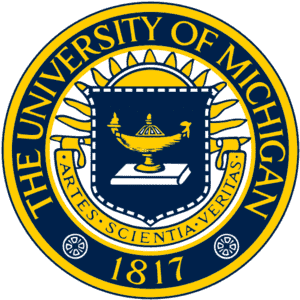
2. Stanford University

3. Pennsylvania State University

4. Michigan State University
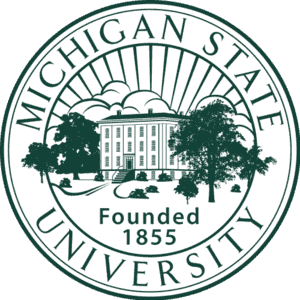
5. Ohio State University

6. University of Washington - Seattle
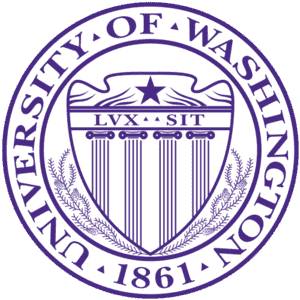
7. University of Wisconsin - Madison

8. University of Illinois at Urbana - Champaign
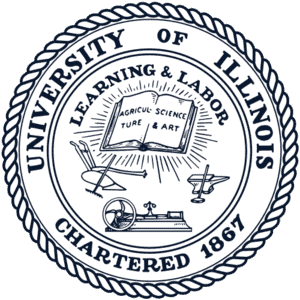
9. Arizona State University - Tempe
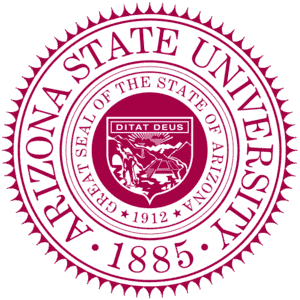
10. Columbia University
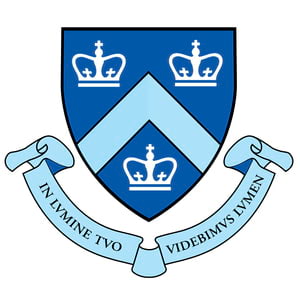
11. Harvard University

12. University of California - Berkeley
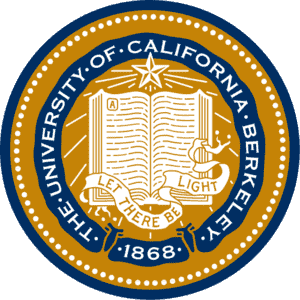
13. University of Texas at Austin

14. University of Maryland - College Park
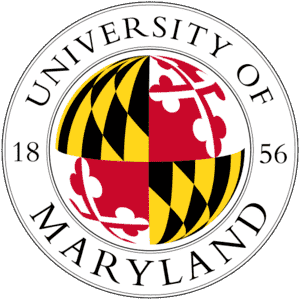
15. University of Minnesota - Twin Cities

16. Cornell University

17. University of California - Los Angeles

18. Johns Hopkins University
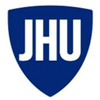
19. University of North Carolina at Chapel Hill
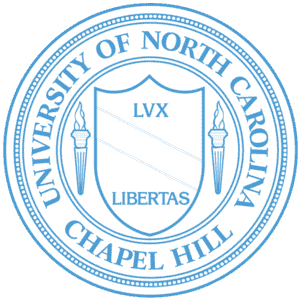
20. Iowa State University

21. University of Florida
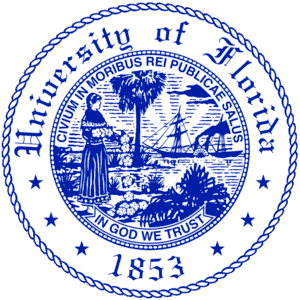
22. University of Pennsylvania

23. University of Pittsburgh

24. University of Virginia

25. Vanderbilt University

26. University of Arizona

27. University of Georgia
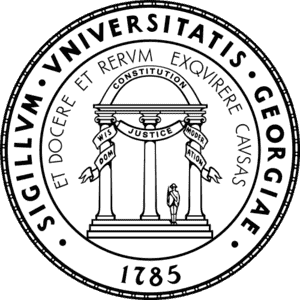
28. Carnegie Mellon University
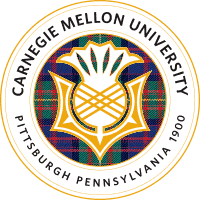
29. Florida State University

30. Massachusetts Institute of Technology
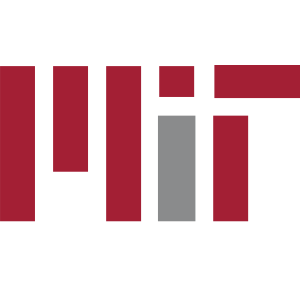
31. New York University
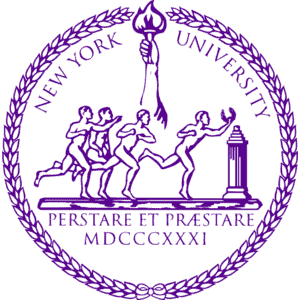
32. University of Southern California

33. University of South Florida

34. Rutgers University - New Brunswick

35. University of Illinois at Chicago

36. University of Colorado Boulder
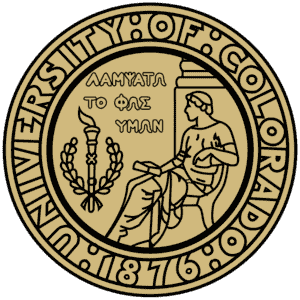
37. University of Iowa

38. Purdue University

39. University of Missouri - Columbia

40. Texas A&M University - College Station
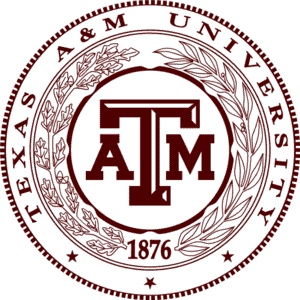
41. University of Chicago

42. Northwestern University
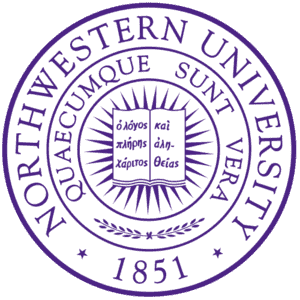
43. North Carolina State University at Raleigh

44. Virginia Polytechnic Institute and State University

45. University of Nebraska - Lincoln

46. Yale University

47. University of California - Santa Barbara
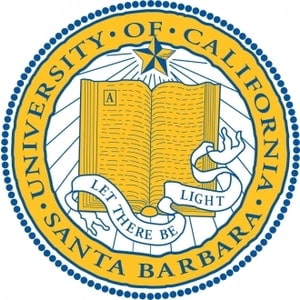
48. Georgia State University
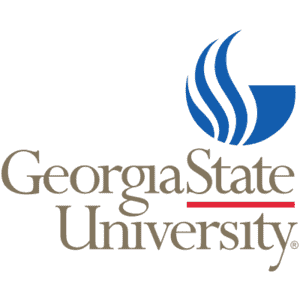
49. Brigham Young University - Provo


50. Georgia Institute of Technology

51. University of Kansas

52. University of California-San Diego

53. Indiana University - Bloomington

54. George Mason University
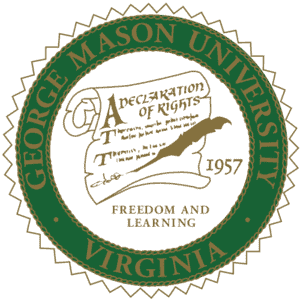
55. University of Kentucky
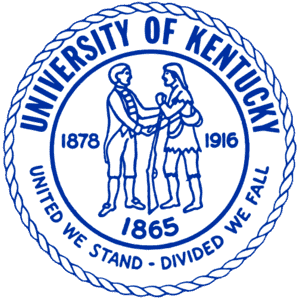
56. University of Utah
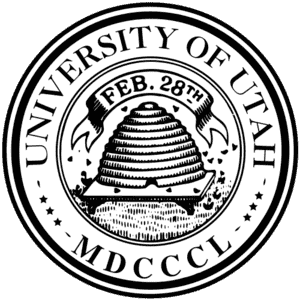
57. Boston University

58. Duke University

59. University of California - Irvine
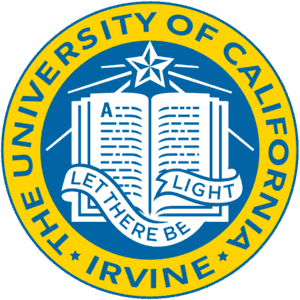
60. University of California - Davis
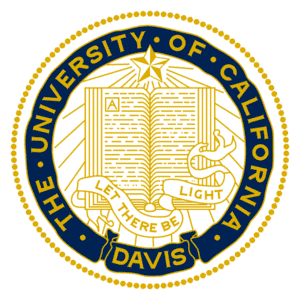
61. University of Tennessee - Knoxville

62. University at Buffalo

63. University of Connecticut
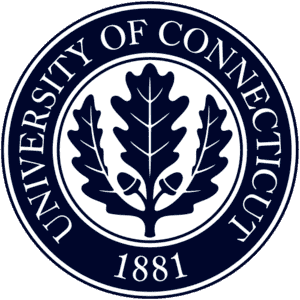
64. University of Rochester

65. Syracuse University
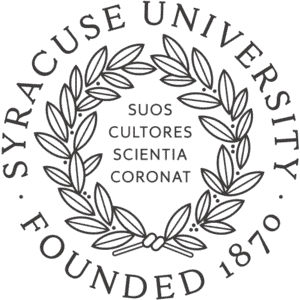
66. University of South Carolina - Columbia

67. University of Central Florida

68. University of Massachusetts - Amherst

69. University of California - San Francisco
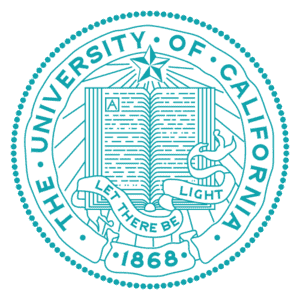
70. University of Delaware
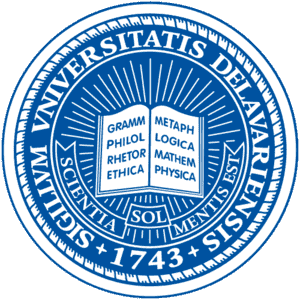
71. University of Houston

72. San Diego State University

73. Boston College

74. Emory University

75. Temple University
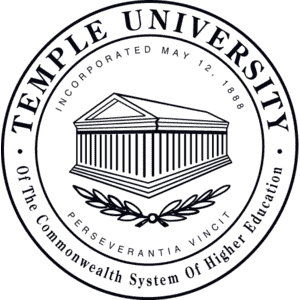
76. Seattle University

77. Texas Tech University

78. Louisiana State University and Agricultural & Mechanical College

79. University of Miami
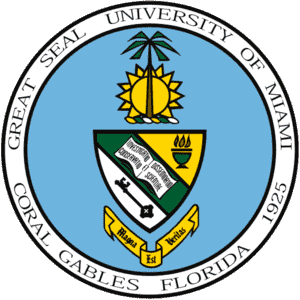
80. University of Alabama
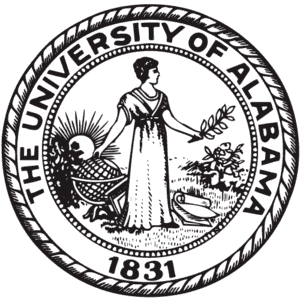
81. University of North Carolina at Charlotte
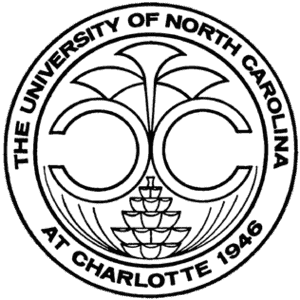
82. Princeton University
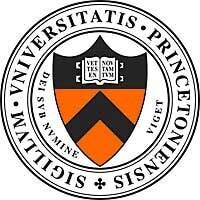
83. SUNY at Albany

84. University of Cincinnati

85. George Washington University

86. University of Hawaii at Manoa
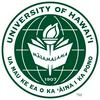
87. Miami University - Oxford

88. Indiana University - Purdue University - Indianapolis

89. Utah State University
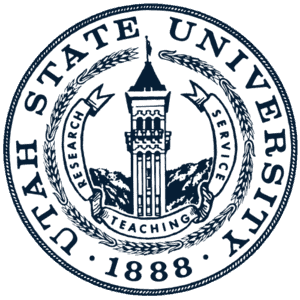
90. University of Oklahoma - Norman

91. Case Western Reserve University

92. University of New Mexico
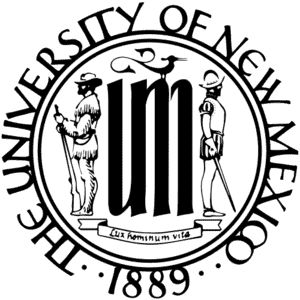
93. Northern Illinois University
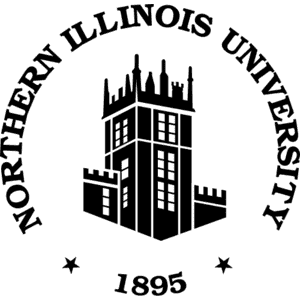
94. University of Colorado Denver/Anschutz Medical Campus

95. Oregon State University

96. Wayne State University
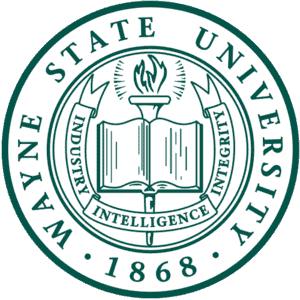
97. Clemson University

98. University of North Carolina at Greensboro

99. Virginia Commonwealth University
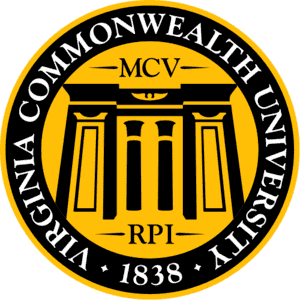
100. Kent State University at Kent

The best cities to study Education Majors in the United States based on the number of universities and their ranks are Ann Arbor , Stanford , University Park , and East Lansing .
Liberal Arts & Social Sciences subfields in the United States
- Twitter Facebook Pinterest
- Highest Paid
- Popular Online
- Non-Traditional
2023 Education Degree Guide
Studying in the field of education will help prepare you to be an effective and inspirational teacher. You will learn skills on how to manage a classroom while still providing an interesting lesson. In this field, you will influence children, teenagers or adults in a way that can change their lives. A teacher is much more than an educator, you will act as a counselor, disciplinarian, friend, and confidant. The roles you will play in the lives of your students are endless.
However, teaching is not the only career available in the field of education. It is also possible to become a principle or an administrator. Here is where you take the knowledge you already have about the teaching profession and use it to help your school run smoothly. Another direction that you may choose to go within this field is career or guidance counseling. This allows you to have a more one on one role with the student in order to motivate and encourage them.
If education interests you, but working directly with students is not your passion, you may choose to work as a curriculum developer. Here you would work with state standards and tests, instruction methods, and technology to make sure students are getting the best education possible.
A Recent Jump in Education Degrees
In 2020-2021, education was the 4th most popular major nationwide with 327,871 degrees awarded. This is a difference of 17,270 over the prior year, a growth of 5.3%.
This year's Best Education Schools ranking compares 1080 of them to identify the best overall programs in the country. Continue reading to check out one of our many unbiased rankings of education programs later in this article.

Best Education Schools by Degree
What are the requirements for a degree in education.
There are many different skills essential to working in education: Some of the most important are enthusiasm, compassion, dedication, creativity, organization, and flexibility. No matter how perfectly you plan a lesson or a meeting; there is always a chance that something may not go according to plan, making quick thinking and adaptability important. It is also important to have a passion for the future, even if you are not working directly in a classroom every day.
There is a very wide variety of majors within education. Students with different strengths can excel in this field because of the endless options. Students in education should have a desire to help the greater common good and should also have strong communication skills. Communication is important for teaching, but also to make sure everyone is on the same page, whether it is parents, administrators, or the state. Most of the concentrations within this field will require at least one semester of student teaching.
Getting Accepted Into an Education Program
A high school diploma or equivalent is typically required for most education degree programs and many students will need a minimum GPA and SAT/ACT score depending on the school. In addition to these basic education program qualifications, to serve in some education careers, special certification may be required outside of your degree.
Education Degree Types
There are various different levels of education degrees. You can spend many years getting as high as a in education to something that takes less time like a . Different education degrees vary in how long they take.
A doctor's degree is the most common level of education achieved by those in careers related to education, with approximately 28.2% of workers getting one. See the the most common levels of education for education workers below.
61.6% of education workers have at least a master's. View the chart below to get an idea of what degree level most of those in education careers have.

This of course varies depending on which education career you choose.
Career Opportunities for Education Majors
There are a variety of career opportunities for those who enter the education field. Some may want to be a classroom teacher in either a particular grade level or subject, whereas others will choose to serve as a school administrator. Other options include school counseling, curriculum development, educational policy, tutoring and more. With the many diverse directions you can go, there is bound to be a career options that appeals to you.
Solid Growth Projected for Education Careers
Want a job when you graduate with your education degree? Education careers are expected to grow 9.6% between 2016 and 2026.
The following options are some of the most in-demand careers related to education.
Education Degree Salary Potential
Recently graduated education students earned an average of $46,198 in 2019-2020. Earnings can range from as low as $8,185 to as high as $165,663. As you might expect, salaries for education graduates vary depending on the level of education that was acquired.

High Paying Careers for Education Majors
Salaries for education graduates can vary widely by the occupation you choose as well. The following table shows the top highest paying careers education grads often go into.
Getting Your Education Degree
With over 25,950 different education degree programs to choose from, finding the best fit for you can be a challenge. Fortunately you have come to the right place. We have analyzed all of these schools to come up with hundreds of unbiased education school rankings to help you with this.
Top Ranking Lists for Education
Best schools education, best value colleges education, majors related to education, education majors to study.
View All Education Related Majors >
Majors Similar to Education
National Center for Education Statistics
O*NET Online
Image Credit: By Horadrim under License More about our data sources and methodologies .
Popular Reports
Compare your school options.

- Share on twitter
- Share on facebook
Wall Street Journal/Times Higher Education College Rankings 2020
The Wall Street Journal/Times Higher Education College Rankings gives students and their families the information that they need to help them choose where to study.
The ranking of more than 800 universities is based on 15 individual performance indicators and responses from more than 170,000 current college students, collected through THE ’s annual US Student Survey.
It is designed to answer the questions that matter most to students and their families: How likely am I to graduate, pay off my loans and get a good job? Does the college have plenty of resources to teach me properly? Will I be engaged and stretched in the classroom and get good access to my teachers? Is there a diverse campus community?
View the Wall Street Journal/Times Higher Education College Rankings 2020 methodology
This year, Harvard University tops the table for the third year in a row, while the Massachusetts Institute of Technology and Yale University remain in second and third place respectively.
The University of Pennsylvania climbs six places to fourth, overtaking the California Institute of Technology, which remains steady in fifth place, tied with Princeton. Brown, Stanford, Cornell and Duke universities round out the top 10.
The University of California, Los Angeles stands as the highest-ranked public institution in joint 25th place, while Amherst College is the top liberal arts college in 20th place.
Read our analysis of the WSJ / THE College Rankings 2020 results
The student-focused WSJ/THE College Rankings differ considerably from the THE World University Rankings, which have a heavier emphasis on research excellence on a global scale.
The calculation of the 2020 College Rankings has been subject to independent audit by professional services firm PricewaterhouseCoopers.
Note: all ranked institutions have an overall score and four pillar scores. However, for each pillar, only institutions ranked in the top 400 overall, or the top 400 in that pillar, have a publicly visible score.
To raise your university’s global profile with THE , please contact [email protected]
To unlock the data behind THE ’s rankings, and access a range of analytical and benchmarking tools, contact [email protected]
- Share on linkedin
Read more about the Wall Street Journal/Times Higher Education College Rankings 2020
Student insights.
- Best liberal arts colleges in the United States 2022
- Best private universities in the United States 2022
- Best public universities in the United States 2022
Academic Insights
- Does performance-based funding work?
- WSJ/THE US College Rankings 2020: Pennsylvania and Johns Hopkins rise
Methodology:

Featured jobs
Featured universities.

2024 College and University Rankings by Major
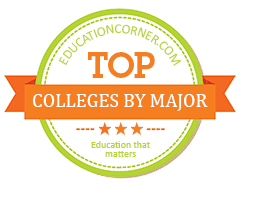
Explore the best colleges and universities in the United States by major and area of study. College rankings are based on a composite of various indices and value metrics including student satisfaction, post-graduate success, graduation rate, admissions selectivity and overall value. Our Methodology
See also: Top 100 Colleges and Universities – Top 100 Most Affordable Universities – Top 100 Most Affordable Community Colleges – Top 100 Highest Acceptance – Top 100 Lowest Acceptance
2024 Design College and University Rankings
2024 business school rankings, 2024 nursing school rankings, 2024 psychology school rankings.
(1) Represents the fall admission rate for full-time undergraduate students. (2) Graduation rate for full-time students who began their studies as first-time degree or certificate seeking students. (3) Percentage of students employed two years after graduation. (4) Median earnings of students six years after graduation. (5) Average net price generated by subtracting grant or scholarship aid from total cost of attendance.
- Top 100 Colleges and Universities
- Top 100 Most Affordable Universities
- Top 100 Most Affordable Community Colleges
- Top 100 Highest Acceptance
- Top 100 Lowest Acceptance
More From Forbes
Most colleges cost less than their tuition; upperclass students face high increases.
- Share to Facebook
- Share to Twitter
- Share to Linkedin
Discounting College
Tuition discounting in higher education keeps growing. The amount of institutional financial aid provided by private colleges and universities continues to increase and the gap between the published tuition and the net price, the price which students actually pay, continues to increase. The average price paid by students, according to the latest study by the National Association of College and University Business Officers , is only 44% of the published price meaning that higher education is discounting its price by 56% for new freshmen. This figure only takes into account the aid provided by the institution; students also very often receive aid from Federal and State governments as well as private organizations such as the Kiwanis and others. Included among the institutions that responded to this year’s NACUBO survey are 13 schools which did tuition resets over the last several years. These are schools which lowered their published price and lowered the amount of aid they give their students thus significantly reducing their tuition discount rate. If one removed the schools which have reduced their price from the survey results, the discount rate of the remaining schools would be even higher than 56%.
Magnifying glass with financial Aid graduation mortar board cap on money
Beyond the average tuition discount rate, schools are providing aid to more than 90% of their first-time students; almost no one is paying the published price and at most institutions, no full-time student pays the published price. In the most recent study by Sallie Mae on How America Pays for College , 54% of students and their families eliminate colleges based on the tuition price alone without doing any further research and 66% eliminate colleges based solely on tuition after applying. These numbers are even higher for families with incomes of $150,000 or more because large numbers of these families do not believe that their student will qualify for any institutional aid despite the fact that most private colleges provide grants and/or scholarships to all of their students. This leads to the anomalous result that the average family income of students at the four-year public institutions is higher than at private colleges and universities as these higher income families are more comfortable having their children look at the lower priced public schools that they know they can afford.
Every year college costs more
Beyond the fact that the high tuition discourages many students from looking at a college, this strategy also has a negative impact on retention rates as most schools hold their institutional aid constant as students progress despite the fact that they continue to increase tuition. Thus, if a school increases its tuition by 3%, a student who has a discount rate of 60% will actually face a tuition increase of 7.5% in their second year and by the time the student graduates in four years, their tuition will have increased more than 23% while the published price will only have increased by 9.2% assuming a 3% increase in tuition a year. Institutions have positive incentives to increase tuition to get more money from continuing students as they continue to increase the discount rate to new students. According to the NACUBO study, the average discount rate for all students is only 51.9% because of this strategy. The impact of tuition increases on highly discounted students is never discussed, yet we know that students and their families are sensitive to price and these price increases have a negative impact on a student’s ability to continue in college.
When Is The Voice Season 25 Finale All About The Star Studded Event
Senua s saga hellblade 2 review xbox get out of my head, ‘echoing nazi germany’: biden campaign calls out trump’s truth social video mentioning ‘unified reich’.
One must then ask why do schools persist with this pricing strategy known as high price/high aid? Why do schools continue to put a price out in the market which, at a great majority of private institutions, no one pays? The myth persists among many that students and their families will resonate more to a substantial institutional grant rather than focusing on the net price, the bottom line of what it will actually cost them. As more schools are doing tuition resets and decreasing the gap between their published and net price with positive results, others are realizing that the high price/high aid strategy is not effective and that more and more students are making their college choice based on net price.
School closing
Furthermore, a high discount rate is usually a sign of institutional weakness as, at most of the high discount schools, they are unable to fill their classes without very high aid offers to all students including those without financial need. At the nine non-profit college that have announced that they plan to close in 2024 or 2025 for which data was available, the average discount rate in fall 2021 (the latest year the data is publicly available) was 65% and 98% of the students at these schools received institutional aid. It is highly likely that these numbers have increased in the last three years. It is time that schools seriously reconsider their pricing strategies; this system is broken.
- Editorial Standards
- Reprints & Permissions
Join The Conversation
One Community. Many Voices. Create a free account to share your thoughts.
Forbes Community Guidelines
Our community is about connecting people through open and thoughtful conversations. We want our readers to share their views and exchange ideas and facts in a safe space.
In order to do so, please follow the posting rules in our site's Terms of Service. We've summarized some of those key rules below. Simply put, keep it civil.
Your post will be rejected if we notice that it seems to contain:
- False or intentionally out-of-context or misleading information
- Insults, profanity, incoherent, obscene or inflammatory language or threats of any kind
- Attacks on the identity of other commenters or the article's author
- Content that otherwise violates our site's terms.
User accounts will be blocked if we notice or believe that users are engaged in:
- Continuous attempts to re-post comments that have been previously moderated/rejected
- Racist, sexist, homophobic or other discriminatory comments
- Attempts or tactics that put the site security at risk
- Actions that otherwise violate our site's terms.
So, how can you be a power user?
- Stay on topic and share your insights
- Feel free to be clear and thoughtful to get your point across
- ‘Like’ or ‘Dislike’ to show your point of view.
- Protect your community.
- Use the report tool to alert us when someone breaks the rules.
Thanks for reading our community guidelines. Please read the full list of posting rules found in our site's Terms of Service.
Rankings by College Major
Search our college majors list to explore what you can study in college and decide what you should major in. Choose a college major to find the best colleges with degrees in that major.
- Health Professions
Protective Services
Science, technology, & math, trades & personal services.
- Online Majors
- Commercial and Advertising Art
- Illustration
- Printmaking
- Studio Arts
- Visual and Performing Arts
Arts Management
- Arts, Entertainment, and Media Management
- Fine and Studio Arts Management
- Design and Visual Communications
- Fashion and Apparel Design
- Game Design and Interactive Media
- Graphic Design
- Industrial and Product Design
- Interior Design
- Metal and Jewelry Arts
- Web Page and Digital Design
Film and Photography
- Animation, Video Graphics and Special Effects
- Cinematography and Video Production
- Commercial Photography
- Film and Video Studies
- Photography
- Music Management
- Music Performance
- Music Technology
- Music Theory and Composition
- Musical Instruments
- Voice and Opera
- Performing Arts
- Drama and Theatre Production
- Theatre Design
Business and Management
- Construction Management
- Entrepreneurship
- Fashion and Apparel Merchandising
- Hospitality and Tourism Management
- Human Resources
- International Business
- Logistics and Supply Chain Management
- Management Sciences and Information Systems
- Managerial Economics
- Merchandising and Buying Operations
- Office Management
- Operations Management
- Organizational Behavior Studies
- Real Estate
- Small Business Management
- Finance and Accounting
- Actuarial Science
- Banking and Finance
- Financial Planning
Sports Management and Leisure Studies
- Sports and Fitness Management
- Adult and Continuing Education
- Agricultural Teacher Education
- Art Teacher Education
- Bilingual and Multicultural Education
- Business Teacher Education
- Early Childhood Education
- Education Research and Evaluation
- Educational Administration
- Elementary Education
- English and Speech Teacher Education
- Foreign Language Teacher Education
- Health Teacher Education
- High School Education
- History Teacher Education
- Kindergarten and Preschool Education
- Library Science
- Mathematics Teacher Education
- Middle School Education
- Music Teacher Education
- Physical Education Teaching and Coaching
- Science Teacher Education
- Social Studies Teacher Education
- Special Education and Teaching
- Teaching Assistant
- Teaching English as a Second Language
Dental Studies
- Dental Assisting
- Dental Hygiene
Food and Nutrition
- Dietetics and Clinical Nutrition
- Food Science
- Foods, Nutrition, and Wellness Studies
Health Care Management
- Health Unit Coordinator and Manager
- Hospital Management
- Medical Insurance Billing and Claims
- Medical Insurance Coding
- Medical Office Management
- Medical Records Administration
- Medical Secretary
- Alternative Medicine and Holistic Health
- Communication Disorders
- Emergency Care Attendant (EMT)
- Health Service Preparatory Studies
- Mental and Social Health Services
- Mental Health Counseling
- Psychiatric and Mental Health Services
- Radiation Therapy
- Respiratory Care Therapy
- Speech Language Pathology
- Substance Abuse and Addiction Counseling
- Surgical Technologist
Kinesiology and Physical Therapy
- Athletic Training
- Exercise Physiology
- Kinesiology and Exercise Science
- Massage Therapy and Bodywork
- Occupational Therapy
- Physical Therapy
- Rehabilitation and Therapy
- Yoga and Movement Therapy
Medical Assistants and Technicians
- Biomedical Technician
- Cardiovascular Technician
- Emergency Medical Technician (EMT Paramedic)
- Health Aides and Attendants
- Medical Assistant
- Medical Laboratory Technician
- Medical Office Assistant
- Medical Records Technician
- Medical Technician
- Nuclear Medical Technician
- Occupational Therapist Assistant
- Phlebotomy Technician
- Physical Therapy Technician
- Physician Assistant
- Radiologic Technician
- Sonographer and Ultrasound Technician
- Licensed Practical Nurse Training (LPN)
- Nursing Administration
- Nursing Assistant
- Nursing Science, Education, and Practice
- Pharmacy and Pharmaceutical Sciences
- Pharmacy Technician
Public Health
- Community Health Services and Counseling
- Environmental Health
- Public Health Education
- Anthropology and Sociology
- Adult Development, Gerontology, and Aging
- Archaeology
- Child Development
- Family Studies and Consumer Sciences
- Human Development
- Communications
- Advertising
- Broadcast Journalism
- Corporate Communications
- Digital Communication and Media/Multimedia
- Graphic Communications
- Photojournalism
- Public Relations
- Radio and Television
- Sports Communication
- Creative Writing
- Playwriting and Screenwriting
- Rhetoric and Composition
Foreign Languages
- Arabic Language and Literature
- Chinese Language and Literature
- East Asian Languages and Literatures
- Foreign Languages and Literatures
- French Language and Literature
- German Language and Literature
- Italian Language and Literature
- Japanese Language and Literature
- Linguistics, Interpretation, and Translation
- Russian and Eastern European Languages and Literature
- Sign Language
- Spanish Language and Literature
Global Studies
- African Studies
- Asian Studies
- European and Russian Studies
- Latin American Studies
- North American Studies
- Art History
- Historic Preservation and Conservation
- Music History and Literature
Interdisciplinary Studies
- African American Studies
- Hispanic American Studies
- Latin and Ancient Greek Studies
- Liberal Arts and Humanities
- Minority and Ethnic Studies
- Natural Sciences
- Physical Sciences
- Professional and Technical Writing
- Social Science Research Methods
- Social Sciences
- Systems Science and Theory
- Women's Studies
International Relations
- International Studies
- Peace Studies and Conflict Resolution
- Legal Studies
- Pre-Law Studies
Political Science
- Political Science and Government
- Behavioral Sciences
- Clinical Psychology
- Cognitive Science
- Counseling Psychology
- Developmental and Child Psychology
- Industrial and Organizational Psychology
- Physiological Psychology
- Research and Experimental Psychology
- Social Psychology
Public Policy and Social Services
- Community Organization and Advocacy
- Family and Community Services
- Human Services
- Medical Social Work
- Non-Profit and Public Management
- Public Administration
- Social Work and Youth Services
- Urban Studies and Affairs
- Urban, Community and Regional Planning
- Religious Studies
- Biblical Studies
- Divinity, Ministry, and Pre-Theology
- Missionary Studies
- Pastoral Counseling and Specialized Ministries
- Religious Education
- Talmudic and Rabbinical Studies
- Theological and Ministerial Studies
- Criminal Justice
- Criminology
- Cyber/Computer Forensics and Counterterrorism
- Forensic Science and Technology
- Security Services
- Fire Protection and Prevention
- Fire Science and Fire Fighting
- Homeland Security and Disaster Management
- Intelligence
Agricultural Sciences
- Agricultural and Food Products Processing
- Agricultural Business
- Agricultural Mechanics and Machinery
- Agricultural Production Operations
- Agriculture
- Animal Sciences and Husbandry
- Aquaculture
- Crop and Soil Sciences
- Equine Studies
- Horticulture
- Landscaping and Groundskeeping
- Plant Science
- Architecture
- Environmental Architecture and Design
- Interior Architecture
- Landscape Architecture
- Biochemistry and Molecular Biology
- Bioinformatics
- Biomedical Sciences and Molecular Medicine
- Biotechnology
- Botany and Plant Physiology
- Cellular Biology
- Ecology and Evolutionary Biology
- Marine Biology and Oceanography
- Microbiology
- Neuroscience and Neurobiology
- Pharmacology and Toxicology
- Physiology and Pathology
- Pre-Medicine Studies
- Zoology and Entomology
- Materials Science
- Computer Science
- Computer Graphics
- Computer Software Engineering
- Information Science
- Engineering
- Aerospace Engineering
- Agricultural Engineering
- Architectural Engineering
- Bioengineering and Biomedical Engineering
- Chemical Engineering
- Civil Engineering
- Computer Hardware Engineering
- Construction Engineering
- Electrical Engineering
- Engineering Physics
- Engineering Science
- Environmental Engineering
- Industrial Engineering
- Manufacturing Engineering
- Materials Engineering
- Mechanical Engineering
- Mining and Petroleum Engineering
- Nuclear Engineering
- Robotics and Automation Engineering
- Systems Engineering
- Environmental Science
- Atmospheric Sciences and Meteorology
- Geology and Earth Science
- Marine Science
- Natural Resources Conservation and Management
- Wildlife and Fisheries Management
- Information Technology
- Computer and Information Systems Security
- Computer Systems Analysis
- Computer Systems Networking and Telecommunications
- Network, Database, and System Administration
- Computational and Applied Mathematics
- Mathematics
- Astronomy and Astrophysics
Veterinary Studies
- Veterinary Sciences
- Veterinary Technician and Assistant
Building and Construction
- Construction and Heavy Equipment Operation
- Electrician
- General Construction Trades
- HVAC and Refrigeration Engineering Technician
- Woodworking
- Cosmetology
- Cosmetology Instruction and Salon Management
- Esthetician and Skin Care
- Make-Up Artist and Tattooing
- Nail Technician
Culinary Arts
- Baking and Pastry Arts
- Culinary Arts and Food Service
- Restaurant and Food Services Management
Engineering Technicians
- Aerospace Engineering Technician
- Architectural Engineering Technician
- Civil Engineering Technician
- Computer Engineering Technician
- Computer Systems Technician
- Construction Engineering Technician
- Electrical Engineering Technician
- Environmental Engineering Technician
- Instrumentation Technician
- Manufacturing Engineering Technician
- Mechanical Engineering Technician
- Robotics and Automation Engineering Technician
- Surveying Technician
- Welding Engineering Technician
- Aircraft Maintenance
- Automotive Engineering Technician
- Automotive Mechanics
- Computer Installation and Repair
- Diesel Mechanics
- Electronics Equipment Installation and Repair
- Heavy Equipment Maintenance Technician
- Industrial Electronics Technician
- Mechanics and Repair
- Motorcycle Maintenance and Repair
Trades and Personal Services
- Accounting Technician and Bookkeeping
- Aeronautics and Aviation Technology
- Air Transportation
- Apparel and Textile Science
- Aviation Management and Operations
- Business Support Services
- Child Care Provider
- Communications Technicians
- Data Processing
- Drafting and Design (CAD/CADD)
- Funeral Service and Mortuary Science
- Ground Transportation
- Lab Technician
- Legal Administrative Assistant
- Machine and Metal Working
- Occupational Safety and Health Technician
- Precision Production
- Professional Pilot
- Property Management
- Quality Control Technician
- Radio and Television Broadcasting Technician
- Recording Arts Technician
- Retail Management
- Truck, Bus, and Commercial Vehicle Operation
Learn More About Finding the Right College
- Article What’s the Difference Between Early Action and Early Decision?
- Article Your No-Nonsense, No-Stress Guide to the FAFSA
- Article What is the Difference Between the ACT and the SAT?
Florida was just named the best education state in the nation. Here's how.
In its annual ranking of the nation’s “best states,” U.S. News and World Report gave Florida a noteworthy distinction: the top state for education.
Calling Florida the state with the best educational opportunities may have been surprising to many, as the state has been riven in recent years by debates over book bans, teacher pay and diversity initiatives on college campuses.
But the Sunshine State nonetheless won the top education spot in the national magazine’s ranking, just as it did last year.
Based on No. 1 rankings in both education and the economy, Florida rose to the No. 9 spot on U.S. News' overall list of “best states.”
More: Florida was just named one of the nation’s Top 10 'best states' by U.S. News. Here's why.
So how did it claim the top education spot?
Primarily thanks to the strength of its colleges and universities.
U.S. News based its education rankings on a series of statistics measuring the performance of each state’s preK-12 schools and institutions of higher education.
Florida’s preK-12 schools performed well based on the metrics the magazine uses, ranking at No. 10 nationwide. The magazine examined each state’s preschool enrollment rate, high school graduation rate, middle school reading and math test scores, and how well high school students do on the SAT and similar college-admissions tests.
But where the state shined was in the realm of higher education, where Florida topped the nation in the magazine’s ranking.
In calling Florida the best state for higher education, U.S. News examined each state’s college graduation rates, the cost of in-state tuition, the average amount of student debt held by the state’s young adults and the percentage of residents with advanced degrees.
Overall, Florida scored highest in the nation under those metrics. (Read the complete education rankings here .)
With its No. 1 ranking in the higher education realm and No. 10 ranking in preK-12, Florida managed to take the top spot for education overall.
Here are U.S. News’ top 10 states for education:
- Massachusetts
- Connecticut
- New Hampshire
Andrew Marra is a reporter at The Palm Beach Post. Reach him at [email protected] .
Sony and Apollo Move Ahead With Paramount Bid Process but Reticent About Earlier Plan, NYT Reports

FILE PHOTO: The logo of Paramount Pictures studios is pictured after the Writers Guild of America (WGA) said it reached a preliminary labor agreement with major studios in Los Angeles, California, U.S., September 24, 2023. REUTERS/David Swanson/File Photo
(Reuters) - Sony Pictures Entertainment and Apollo Global Management have signed nondisclosure agreements that will allow them to look at Paramount's books ahead of a potential bid for the movie studio's assets, the New York Times reported on Friday, citing people familiar with the matter.
The companies are, however, backing away from an initial plan to make an all-cash $26 billion offer for Paramount, the newspaper said.
Reuters reported this month that Paramount was in talks to open its books to a consortium of the Sony movie unit and the U.S. buyout firm. CNBC later reported that Sony was rethinking its bid, sending Paramount's shares tumbling and helping the Japanese firm's shares surge after upbeat earnings.
Sony and Apollo are now contemplating a variety of approaches to acquire Paramount's assets, the New York Times said.
Paramount declined to comment on the report, while Sony and Apollo did not immediately respond to a request for comment late Friday.
Like other studios, Paramount has been struggling to recover from last year's months-long strikes by Hollywood writers and actors, a soft advertising market and falling cable subscriptions in the United States which have eroded profits for its TV business.
Paramount has also been talking with Skydance Media but earlier this month ended a period of exclusivity in the negotiations.
(Reporting by Mrinmay Dey in Bengaluru; Editing by Edwina Gibbs)
Copyright 2024 Thomson Reuters .
Tags: United States , Japan
The Best Financial Tools for You
Credit Cards

Personal Loans

Comparative assessments and other editorial opinions are those of U.S. News and have not been previously reviewed, approved or endorsed by any other entities, such as banks, credit card issuers or travel companies. The content on this page is accurate as of the posting date; however, some of our partner offers may have expired.

Subscribe to our daily newsletter to get investing advice, rankings and stock market news.
See a newsletter example .
You May Also Like
8 best high-yield reits to buy.
Tony Dong May 21, 2024

Elon Musk's Record of Overpromising
Wayne Duggan May 21, 2024

What Are Magnificent 7 Stocks?

9 Biggest Financial Fraud Cases
Brian O'Connell May 21, 2024

6 Best Vanguard Funds for Retirement
Coryanne Hicks May 21, 2024

Sell in May and Go Away in 2024?
Dmytro Spilka May 20, 2024

7 Best Funds to Hold in a Roth IRA
Tony Dong May 20, 2024

Cheap Dividend Stocks to Buy Under $20
Wayne Duggan May 20, 2024

7 Cheap ETFs to Buy Now
Glenn Fydenkevez May 20, 2024

Utility Stocks for Dividends
Matt Whittaker May 17, 2024

9 Growth Stocks for the Next 10 Years
Jeff Reeves May 17, 2024

7 Best Money Market Funds for 2024
Tony Dong May 17, 2024

5 Best No-Load Mutual Funds
Coryanne Hicks May 17, 2024

Top Stocks From All 11 Market Sectors
Glenn Fydenkevez May 16, 2024

Top Ray Dalio Stocks for 2024
Brian O'Connell May 16, 2024

What Are Financial Advisor Disclosures?
Marguerita Cheng May 16, 2024

21 Investors to Follow on Social Media
Ian Bezek May 16, 2024

7 Best Vanguard Bond Funds to Buy
Tony Dong May 15, 2024

Best Bond Funds for Retirement
Coryanne Hicks May 15, 2024

8 Best Quantum Computing Stocks to Buy
Brian O'Connell May 15, 2024

U.S. News Best Colleges

Expert advice, rankings and data to help you navigate your education journey and find the best college for you.
National Universities
Liberal Arts Colleges
More Rankings & Lists
Latest College Advice
Schools in the National Universities category offer a full range of undergraduate majors, plus master's and Ph.D. programs.

Princeton University

Massachusetts Institute of Technology

Harvard University

Stanford University
See All the Data With College Compass
See expanded profiles and advanced search for more than 1,800 schools, all entering class stats, including SAT scores and GPAs and financial aid packages given to students by schools.
Liberal Arts Colleges emphasize undergraduate education and award at least half of their degrees in the liberal arts fields of study.

Williams College

Amherst College

United States Naval Academy
Best Value Schools
The higher the quality of the program and the lower the cost, the better the deal.
- # 1 Harvard University
- # 2 Princeton University
- # 3 Yale University
Other Rankings & Lists
- Regional Universities
- Regional Colleges
- Engineering Programs
- Historically Black Colleges and Universities
- A-Plus Schools for B Students
- Business Programs
- Top Public Schools
- Ivy League Schools
College Admissions: Get a Step Ahead!
Sign up to receive the latest updates from U.S. News & World Report and our trusted partners and sponsors. By clicking submit, you are agreeing to our Terms and Conditions & Privacy Policy .
U.S. News College Compass
Unlock our comprehensive data, rankings and interactive tools to help you and your child choose the right college.
Expanded Profiles
There are more than 500,000 data points available exclusively to College Compass subscribers.
Test Scores
We break down the SAT/ACT scores and high school GPAs for each college's freshman class.
Financial Aid
Discover how many students receive need-based and merit-based scholarships and grants.
Pick the Perfect Major
Discover the perfect major for you based on your innate wiring. The Innate Assessment sets you up for success by pairing you with majors, colleges and careers that fit your unique skills and abilities.
Colleges By State
- Connecticut
- Massachusetts
- Mississippi
- New Hampshire
- North Carolina
- North Dakota
- Pennsylvania
- Rhode Island
- South Carolina
- South Dakota
- West Virginia
Colleges By Metro Area
- Abilene, TX
- Asheville, NC
- Atlanta, GA
- Augusta, GA
- Baltimore, MD
- Baton Rouge, LA
- Birmingham, AL
- Buffalo, NY
- Charleston, SC
- Charlotte, NC
- Cleveland, OH
- Columbus, OH
- Des Moines, IA
- Detroit, MI
- Gainesville, FL
- Grand Rapids, MI
- Greensboro, NC
- Greenville, SC
- Houston, TX
- Huntsville, AL
- Indianapolis, IN
- Jackson, MS
- Jacksonville, FL
- Kansas City, MO
- Knoxville, TN
- Lakeland, FL
- Lancaster, PA
- Las Vegas, NV
- Los Angeles, CA
- Louisville, KY
- Lynchburg, VA
- Madison, WI
- Memphis, TN
- Milwaukee, WI
- Minneapolis, MN
- Montgomery, AL
- Nashville, TN
- New Orleans, LA
- Orlando, FL
- Pensacola, FL
- Philadelphia, PA
- Phoenix, AZ
- Pittsburgh, PA
- Portland, OR
- Raleigh, NC
- Richmond, VA
- Rochester, NY
- Salt Lake City, UT
- San Antonio, TX
- San Diego, CA
- San Francisco, CA
- Savannah, GA
- Seattle, WA
- Spokane, WA
- Springfield, MO
- St. Louis, MO
- Virginia Beach, VA
- Wilmington, DE
- Worcester, MA
Search U.S. News Best Colleges
Whether you're looking for a small campus in Boston or an engineering program in Albuquerque, we'll help you find the best college for you.
Applying To College
Apply to College

Should Students Submit Test Scores?
14 Colleges With Great Food Options
Questions to Ask on a College Visit
Honors Colleges and Programs
Paying For College
Overlooked Ways to Pay for College

Is the FAFSA Required?
Scholarships for Lesser-Known Sports
FAFSA Delays and Decision Day: Survey
FAFSA Delays Alarm Families, Colleges
Most Recent
How Geography Affects College Admissions

10 Destination West Coast College Towns
Becoming a Criminology Major
Becoming a Cognitive Science Major
Protesting on Campus: What to Know
Choosing The Right College Or University
- Request info
- Majors & Degrees
- Prospective Students
- Current Undergraduate Students
- Current Graduate Students
- Online Students
- Alumni and Friends
- Faculty and Staff
Southern Miss MBA Program jumps in Fortune Education Rankings
Fri, 05/17/2024 - 12:00pm | By: Courtney Robinson
The University of Southern Mississippi (USM) Master of Business Administration program (MBA) program has been ranked No. 31 nationally in the Best Online MBA programs for 2024 by Fortune Education. The current ranking represents a gain of 17 spots from its 2023 rankings.
Housed in the College of Business and Economic Development the program has restructured its curriculum in the last academic year by removing prerequisites barriers and allowing students more flexibility in their elective course selection.
Noted Dr. Bret Becton, Dean of the College of Business and Economic Development, “As the Dean of the College of Business & Economic Development, I am thrilled by our recognition as the No. 31 Best Online MBA Program by Fortune Education.”
Fortune Education ranks programs based on several factors, including price, student backgrounds, and alumni outcome. Other data factored into the decision include graduation rates, retention rates, yield rates, and average undergraduate GPA.
Dr. Steven Stelk, MBA Director, added, “ Fortune’s recognition of our MBA program is gratifying. The College of Business and Economic Development faculty and staff have continued to invest in and refine the online MBA program since it was established in 2014.”
Becton added, “ This achievement stands as a testament to the dedication and expertise of our MBA faculty and staff, whose tireless efforts have played an integral role in shaping our program into one that empowers future business leaders for success in today’s dynamic world.”
Stelk credits much of the improvement to the new curricular structure, which has attracted students with more diverse academic backgrounds.
“The recent rankings are based on the previous academic year, which gives us an opportunity to celebrate the results of our investments and provides fresh motivation to continue refining the program. We implemented novel curriculum changes in Fall 2023,” Stelk stated. “MBA students are now required to take fifteen hours of core business courses in accounting, finance, marketing, management, and strategy. They use the remaining 15 hours of focused electives to develop an area of expertise.”
Available focus areas include management, economic development, sport security management, supply chain/logistics, human capital development, instructional technology, public health, communications/public relations, non-profit studies, and public history. The MBA also now collaborates with the Sport Management MS and Master of Library and Information Science (MLIS) programs to support dual programs.
“We are continuing to develop and test new ideas to increase the value of our MBA, and I am excited to see what the future holds,” Stelk said.
Students can complete the degree fully online or in-person at the Hattiesburg campus in as little as one year, full-time. Additional information can be found online . For inquiries about the MBA program, please contact (601) 266-266-4659.
Learn more about the Fortune Education Best Online MBA Programs for 2024.
Categories: Business and Economic Development
Recent News Articles
Sose student selected for year-long marine technology program, mississippi polymer institute sees more companies participating in pitch event, university libraries special collections processes sheila michaels donation.

IMAGES
COMMENTS
Looking for colleges with an Education major? See a list of colleges with Education programs here to evaluate admissions data, tuition, rankings and more.
The Best Colleges for Education majors ranking is based on key statistics and student reviews using data from the U.S. Department of Education. The ranking compares the top colleges for teachers and educators in the U.S. This year's rankings have introduced an Economic Mobility Index, which measures the economic status change for low-income ...
Top 10 universities in the US for education degrees 2024. Scroll down for the full list of best universities in the US for education degrees. US education rank 2024. Education rank 2024. University. State. 1. 1. University of California, Berkeley.
30 Best Schools for Education Majors. 1. Vanderbilt University. Location: Nashville. Undergrad Enrollment: 6,800. Acceptance Rate: 12%. Middle 50% SAT/ACT: 1470-1570/33-35. Through Vanderbilt's Peabody College, students can pursue programs in areas like Early Childhood and Elementary Education, Secondary Education, and Special Education.
Request Information. 3. University of Washington - Seattle Campus. Seattle, WA. Doctor's Degree Highest Degree Type. 283 Annual Graduates. University of Washington - Seattle Campus is one of the best schools in the country for getting a bachelor's degree in education.
346 Education Degrees Awarded. $53,436 Median Starting Salary. Located in the city of Nashville, Vanderbilt is a private not-for-profit university with a large student population. A Best Colleges rank of #19 out of 2,217 colleges nationwide means Vanderbilt is a great university overall.
The student-focused WSJ/THE College Rankings differ considerably from the THE World University Rankings, which have a heavier emphasis on research excellence on a global scale. Note: all ranked institutions have an overall score and four pillar scores. However, for each pillar, only institutions ranked in the top 400 overall, or the top 400 in that pillar, have a publicly visible score.
Education majors learn the theory and art of teaching to help make an impact inside and outside the classroom. ... Search for your perfect fit with the U.S. News rankings of colleges and universities.
Academic Highlights: There are 230+ undergraduate majors offered across eight schools and colleges, including the top-ranked School of Business and College of Engineering as well as the College of Letters and Science, the College of Agricultural and Life Sciences, and the Schools of Nursing, Education, Pharmacy, and Human Ecology. Undergrads ...
The Best Colleges for Education majors ranking is based on key statistics and student reviews using data from the U.S. Department of Education. The ranking compares the top colleges for teachers and educators in the U.S. This year's rankings have introduced an Economic Mobility Index, which measures the economic status change for low-income ...
Cost $30,234. Earnings $68,150. Graduation rate 67%. Iona University, formerly "Iona College," is a midsized Roman Catholic private college in New Rochelle, New York. Iona's Education Department offers several programs for education majors, most of which are available at the bachelor's or master's level.
Below is the list of 100 best universities for Education Majors in the United States ranked based on their research performance: a graph of 15M citations received by 765K academic papers made by these universities was used to calculate ratings and create the top.
Whether you earn a B.A. or a B.S. in education depends on which program you choose. You can work in education with either type of bachelor's degree. Generally, a B.A. is considered a more well-rounded, liberal arts degree whereas a B.S. is more science and math-focused. Your long-term career goals can help you determine which degree makes the ...
In 2020-2021, education was the 4th most popular major nationwide with 327,871 degrees awarded. This is a difference of 17,270 over the prior year, a growth of 5.3%. This year's Best Education Schools ranking compares 1080 of them to identify the best overall programs
The Wall Street Journal/Times Higher Education College Rankings gives students and their families the information that they need to help them choose where to study. The ranking of more than 800 universities is based on 15 individual performance indicators and responses from more than 170,000 current college students, collected through THE's annual US Student Survey. It is designed to answer ...
2024 Niche College Rankings. College Rankings. Explore college rankings based on rigorous analysis of key statistics and millions of student and alumni reviews. See how we calculate these rankings. Best Colleges. Best by Major. Best by State. Admissions.
2024 Psychology School Rankings. (1) Represents the fall admission rate for full-time undergraduate students. (2) Graduation rate for full-time students who began their studies as first-time degree or certificate seeking students. (3) Percentage of students employed two years after graduation.
Thus, if a school increases its tuition by 3%, a student who has a discount rate of 60% will actually face a tuition increase of 7.5% in their second year and by the time the student graduates in ...
Rankings by College Major. Search our college majors list to explore what you can study in college and decide what you should major in. Choose a college major to find the best colleges with degrees in that major. ... 2024 Best Colleges for Education. Adult and Continuing Education; Agricultural Teacher Education;
0:04. 26:22. In its annual ranking of the nation's "best states," U.S. News and World Report gave Florida a noteworthy distinction: the top state for education. Calling Florida the state ...
US News is a recognized leader in college, grad school, hospital, mutual fund, and car rankings. ... said it reached a preliminary labor agreement with major studios in Los Angeles, California, U ...
Best Value Schools. The higher the quality of the program and the lower the cost, the better the deal. # 1. Harvard University. # 2. Princeton University. # 3. Yale University. See Full Rankings List.
The University of Southern Mississippi (USM) Master of Business Administration program (MBA) program has been ranked No. 31 nationally in the Best Online MBA programs for 2024 by Fortune Education. The current ranking represents a gain of 17 spots from its 2023 rankings. Housed in the College of ...